Building shoes and designers alike at the World Sneaker Championships

PORTLAND, Ore. -- Who knew that nestled among craft breweries and soccer-loving hipsters, Portland stakes its claim as the cradle of athletic footwear design? Turns out, the Rose City could just as easily be dubbed Sneaker City. It’s well-known that Nike and Adidas America are headquartered here, but don’t forget about East Coast brands like Under Armour and New Balance, which also own design houses in the hotbed. Got a tech idea? Pack your bags for Silicon Valley. Got a sneaker design? Book your ticket to PDX.
This summer, Portland was also home to the first-ever World Sneaker Championships, hosted at PENSOLE, the only footwear-specific design academy in North America. (The name is a combination of a pencil, the most important tool for a designer, and a shoe’s sole.) Take 30 students from 13 countries, eight footwear brands, one legendary sneaker designer and stash them in a 4,700-square foot studio for four weeks and you’ve got Project Runway: Sneaker Edition.
PENSOLE creator D’Wayne Edwards sketched his first shoe at 11. A few years later, his high school guidance counselor told him no black kid from Inglewood, Calif., had a shot at designing footwear. “In the 80s, in that area, my destiny was jail or death,” Edwards says now. His best bet, the guidance counselor said, was to work at McDonald’s, or join the military.
Raised by a single mother and with no college degree, Edwards, 45, is one of only eight people to ever design an Air Jordans, working as the lead Jordan designer for 11 years. Worried his name and product meshed together too easily and leery of contributing to product obsession, Edwards started down a new path when he walked away from Nike in 2011: Train the next generation. He sees shoes made to represent mostly African-American superstars and marketed mostly to young African-American athletes. Sneakers are a $50 billion annual industry that’s predominantly controlled by white designers. When he asked Nike what the multi-billion dollar brand planned to do to increase diversity in the design ranks, they told him they didn’t have a plan. He started PENSOLE in 2010 with hopes to open sneaker design to all cultures and socioeconomic backgrounds.
“We’re always telling these kids that they can run, jump and dunk like these athletes,” Edwards says. “But what about changing the conversation to say they can actually design the product they’re purchasing?”
Behind the Scenes at the Inaugural World Sneaker Championships
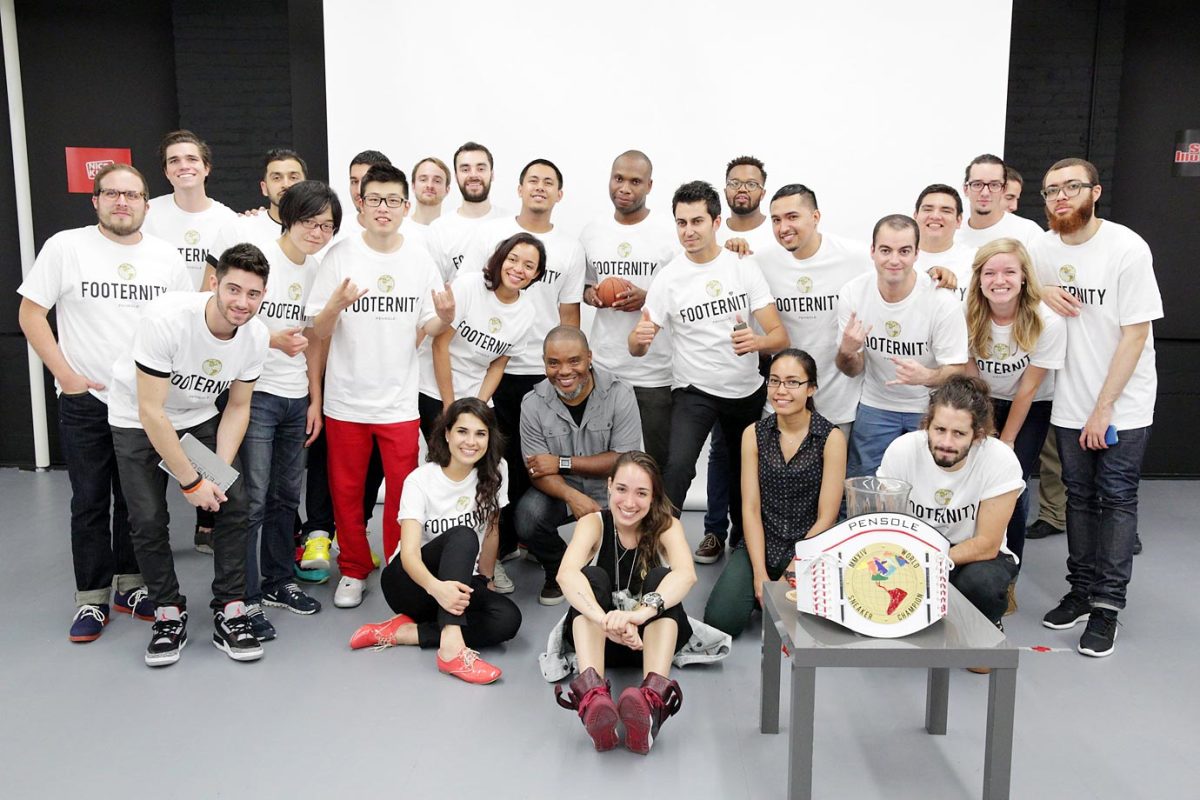
E. Scott Morris (center grey shirt), a 20-year veteran of the sneaker industry, says the first World Sneaker Championships will become “a part of American sneaker mythology” and likens students to superheroes-in-training. “They’re becoming the Captain Americas, the Wonder Womans the Supermans. They’re learning how to fly, and they have their mentor in D’Wayne. He’s Professor X. He’s showing them “this is what you have to do if you’re going to be a hero.”
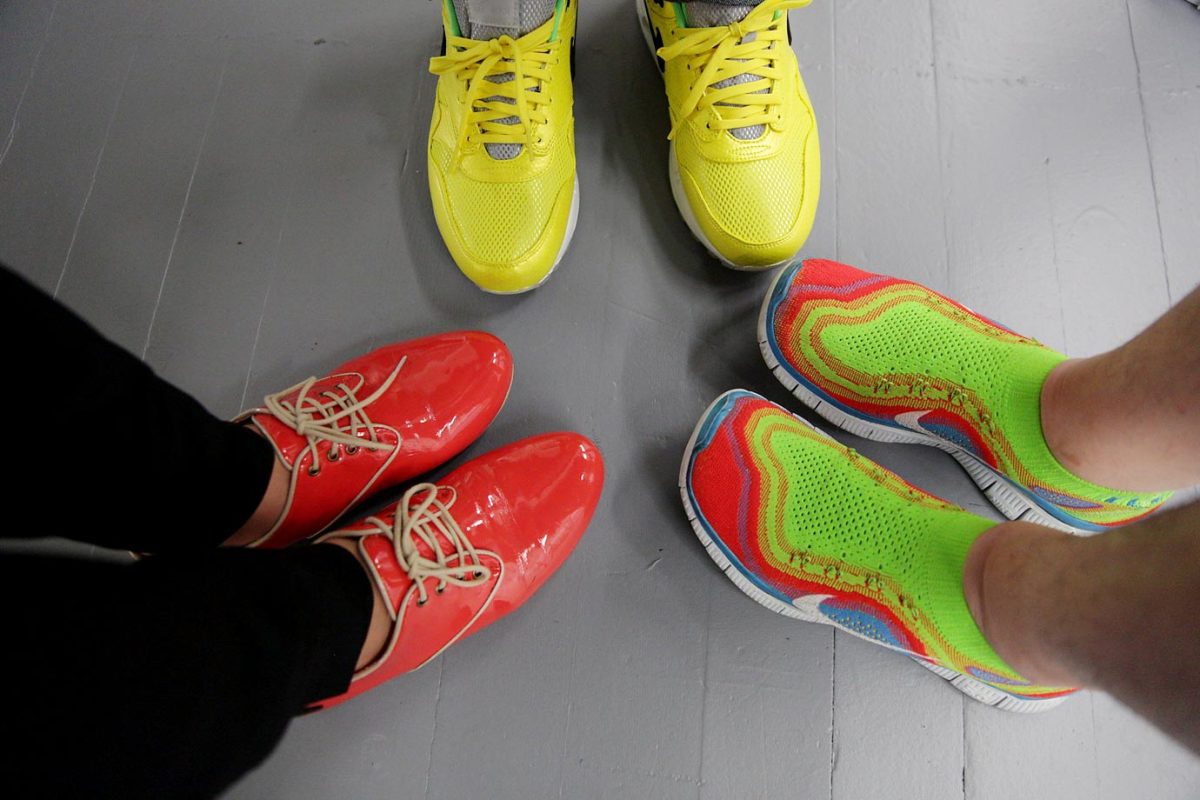
For their final presentation, students wore black pants and white PENSOLE shirts. The creative part of their outfits had to come, fittingly, in their footwear.
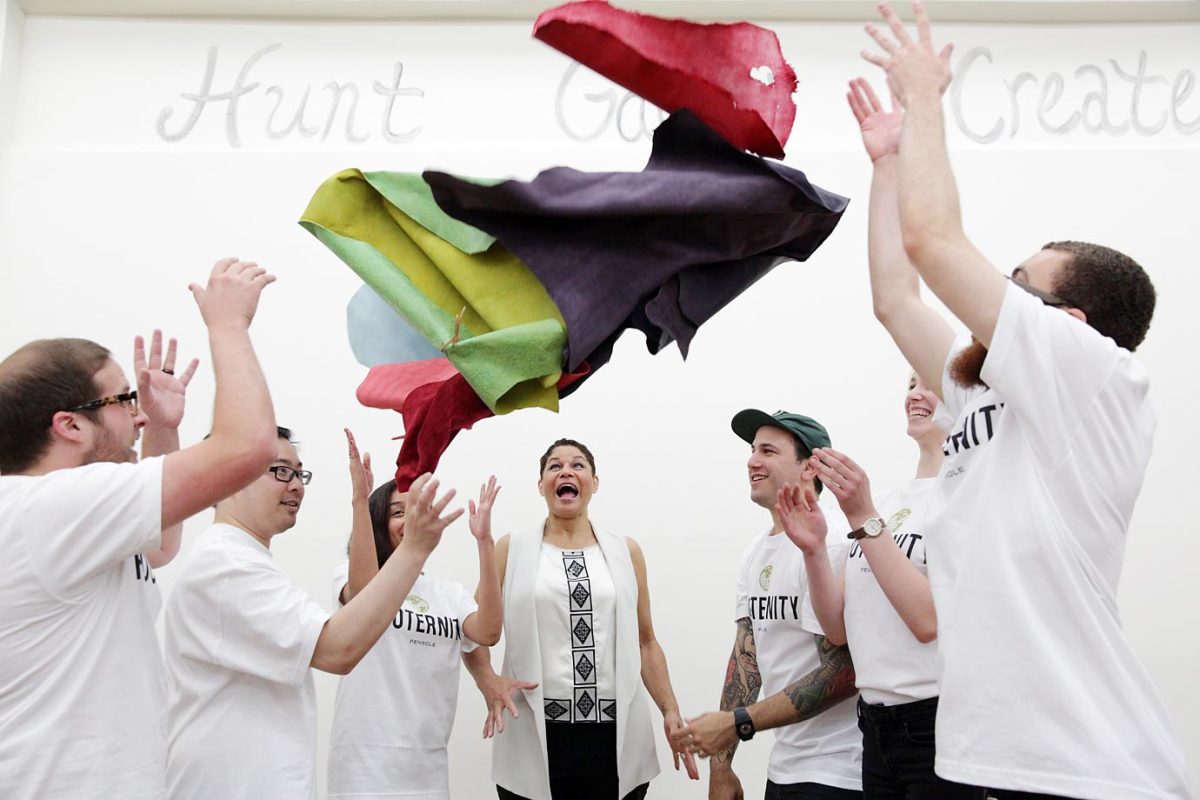
It's easy to assume certain materials and colors will work on designs. That's where Suzette Henry, who runs the Materials Lab at PENSOLE and was the first-ever materials designer hired at Jordan in 2001, comes into the conversation. Henry demanded her CMF students connect with designers during every step of the design process, to create a look that is both complete, and able to function properly.
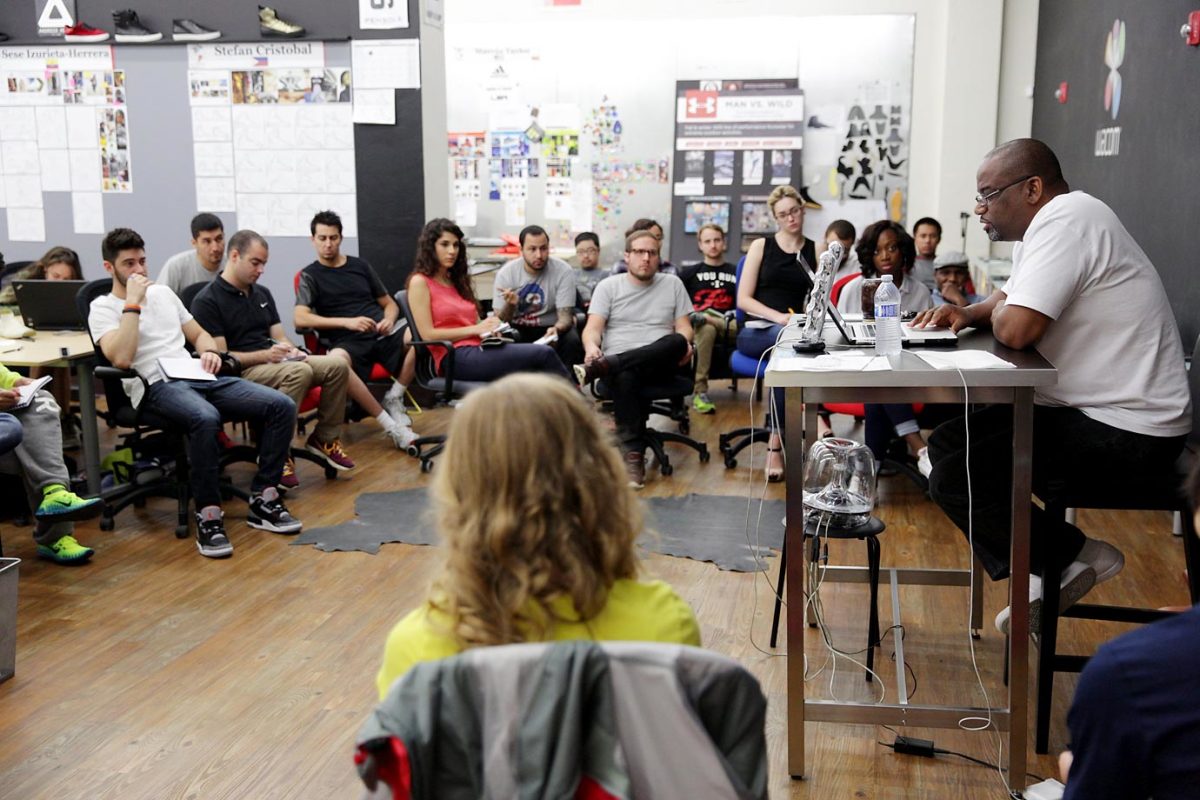
Edwards starts every day with a lecture that includes a sneaker fact (did you know Sneakers got their nickname because the rubber sole allowed them to “sneak” up on people?) a sneaker person (Tinker Hatfield has worked on 16 Jordans and is considered the godfather of sneaker storytelling) and an inspirational quote (“To hell with circumstances; I create opportunities” — Bruce Lee).
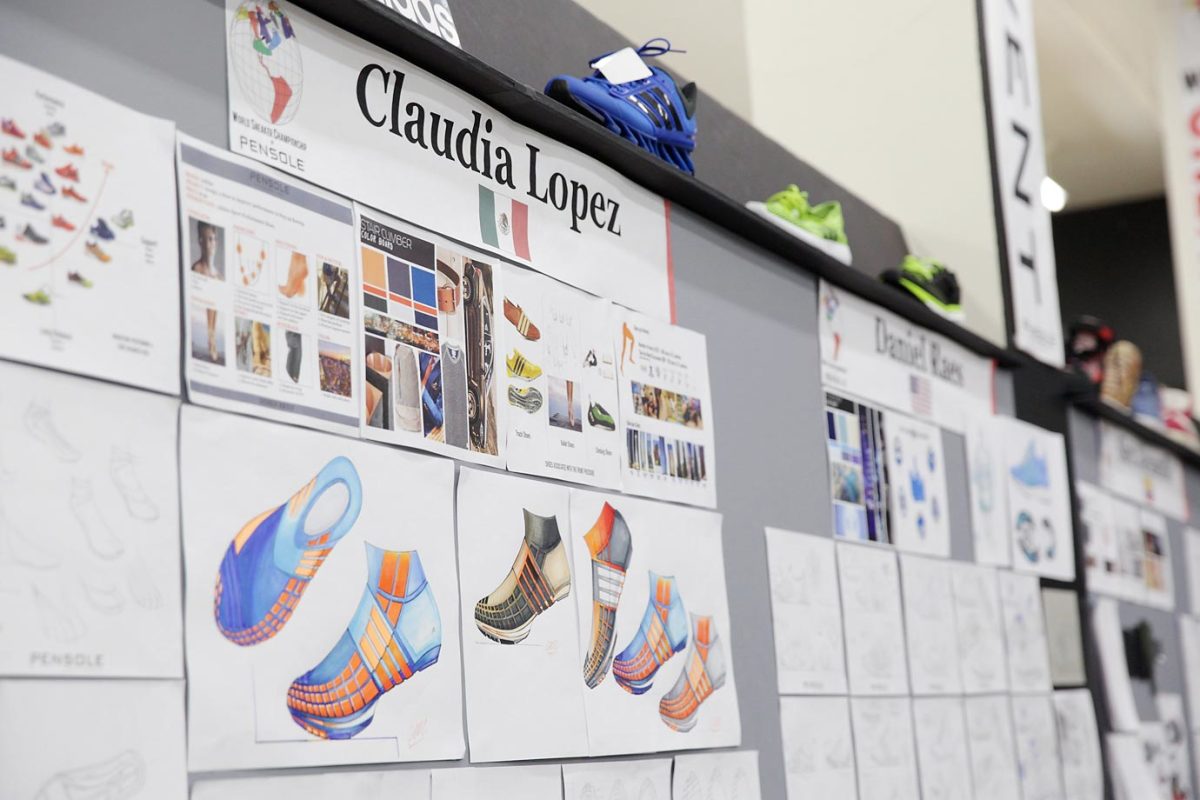
Story boards are a necessary tool for creation, as designers try to explain their inspiration, evolution and final product.
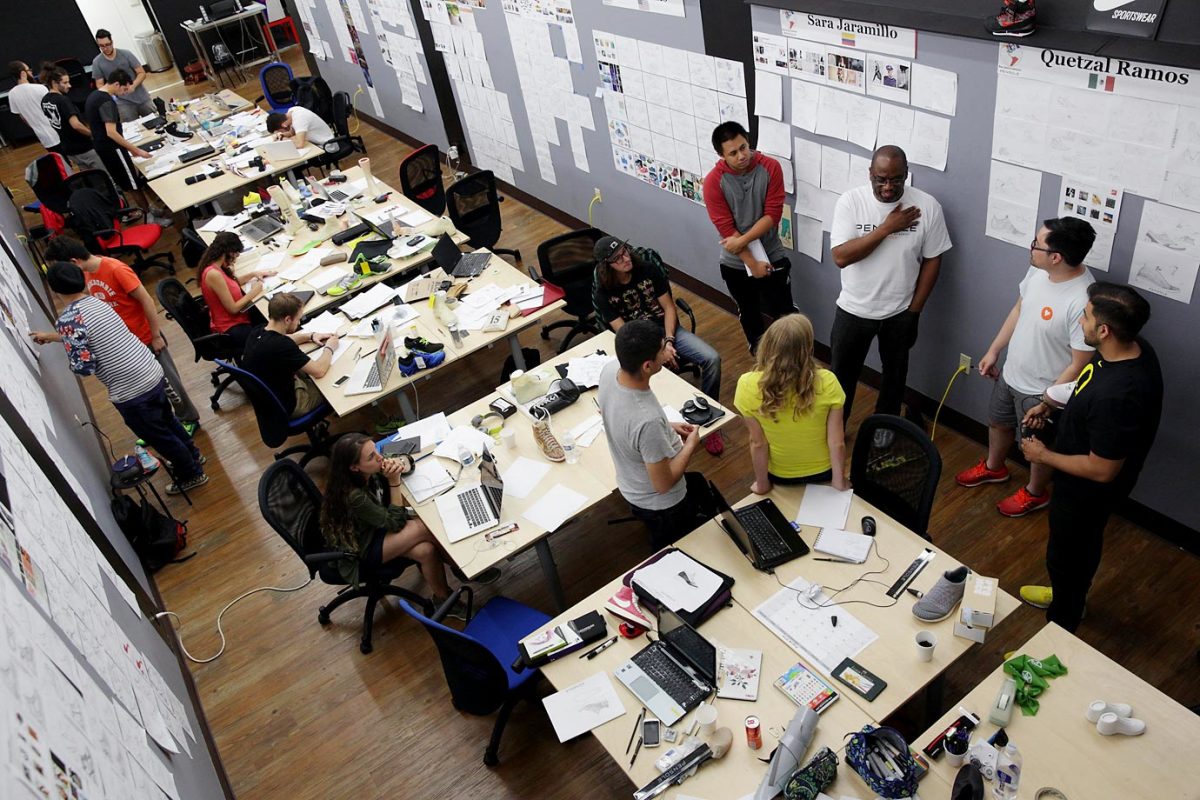
Edwards brought in numerous experts from the footwear world during the WSC, but provided plenty of feedback himself on students’ designs. “Everyone has a skill,” he says. "The difference with designers is, you can see our superpower.”
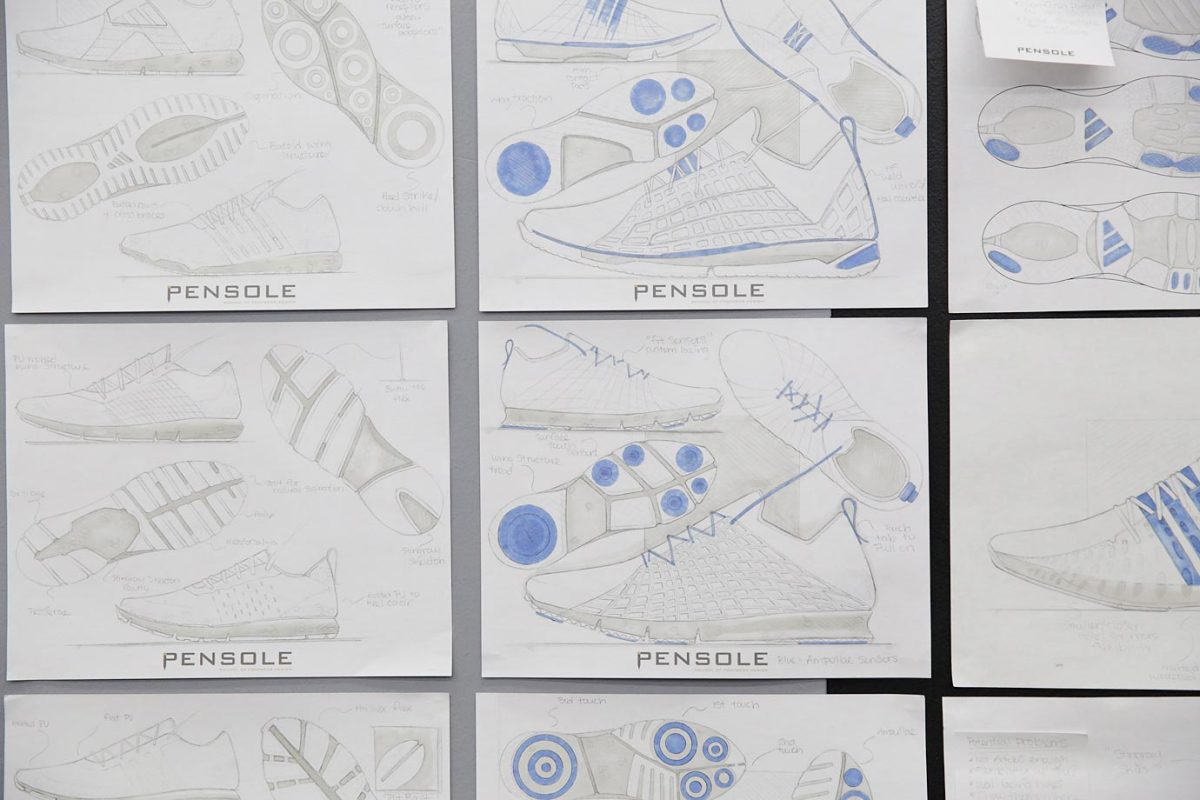
As students sketched iterations, each time adding or taking away small details from their design, they asked for their classmates’ help in deciding which direction to go.
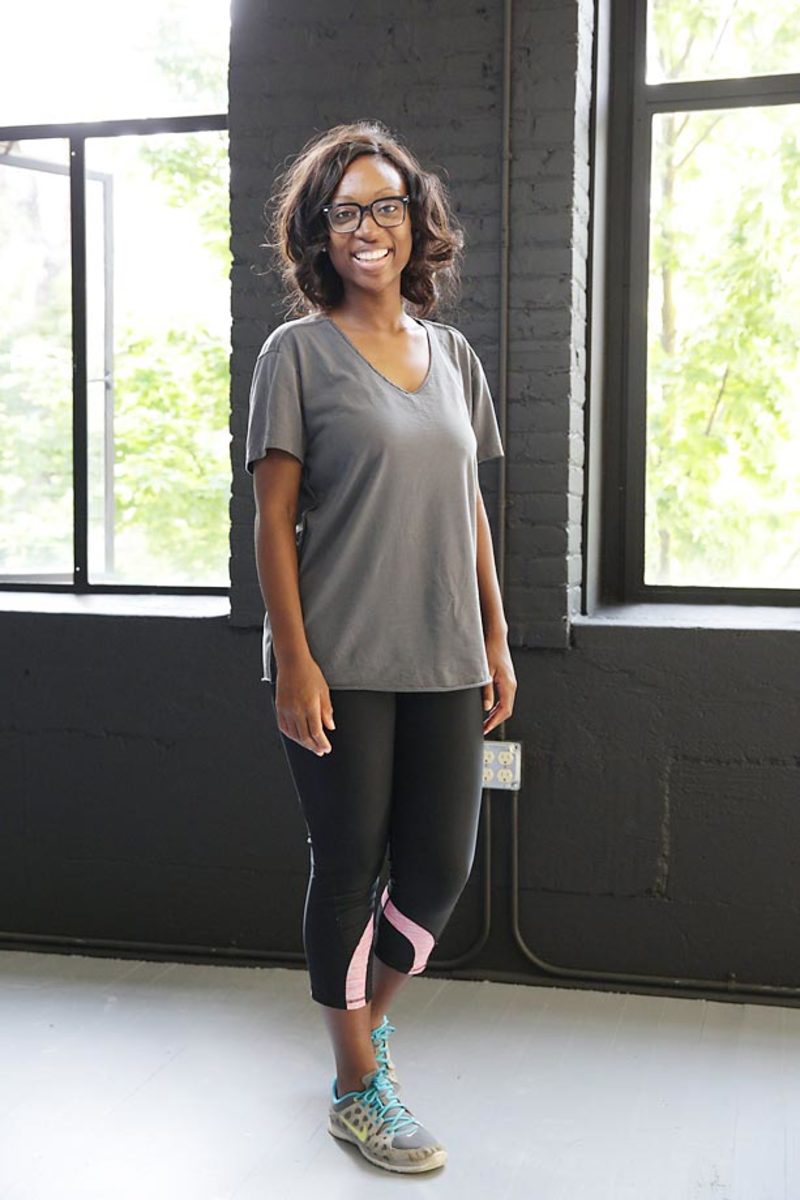
Victoria Adesanmi quit her job at an eyewear company in New York City to study at PENSOLE. Her task when the class wrapped mid-August: Go back to Manhattan, box up her life and figure out the next step in her design career.
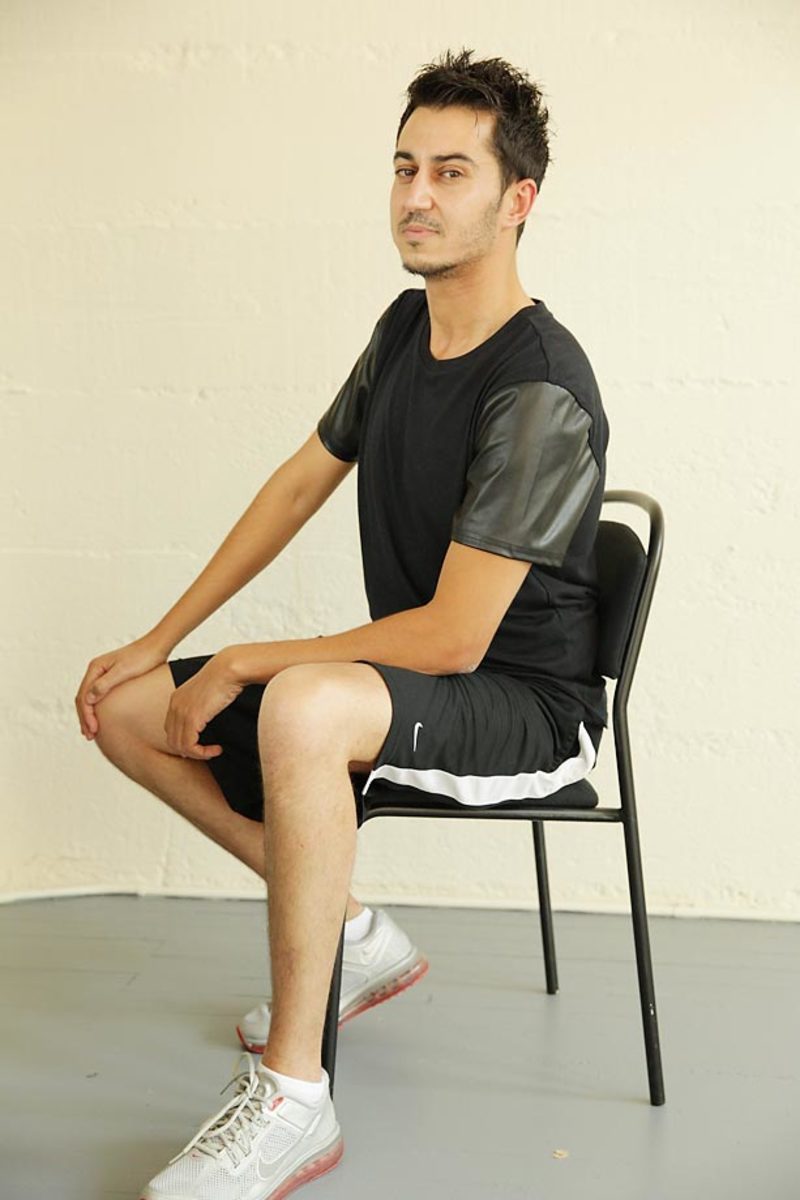
When he left for PENSOLE, well-wishers in Maher Jemili's small village outside of Tunisia, Africa, told the 30-year-old student "Say hi to Barack Obama!"
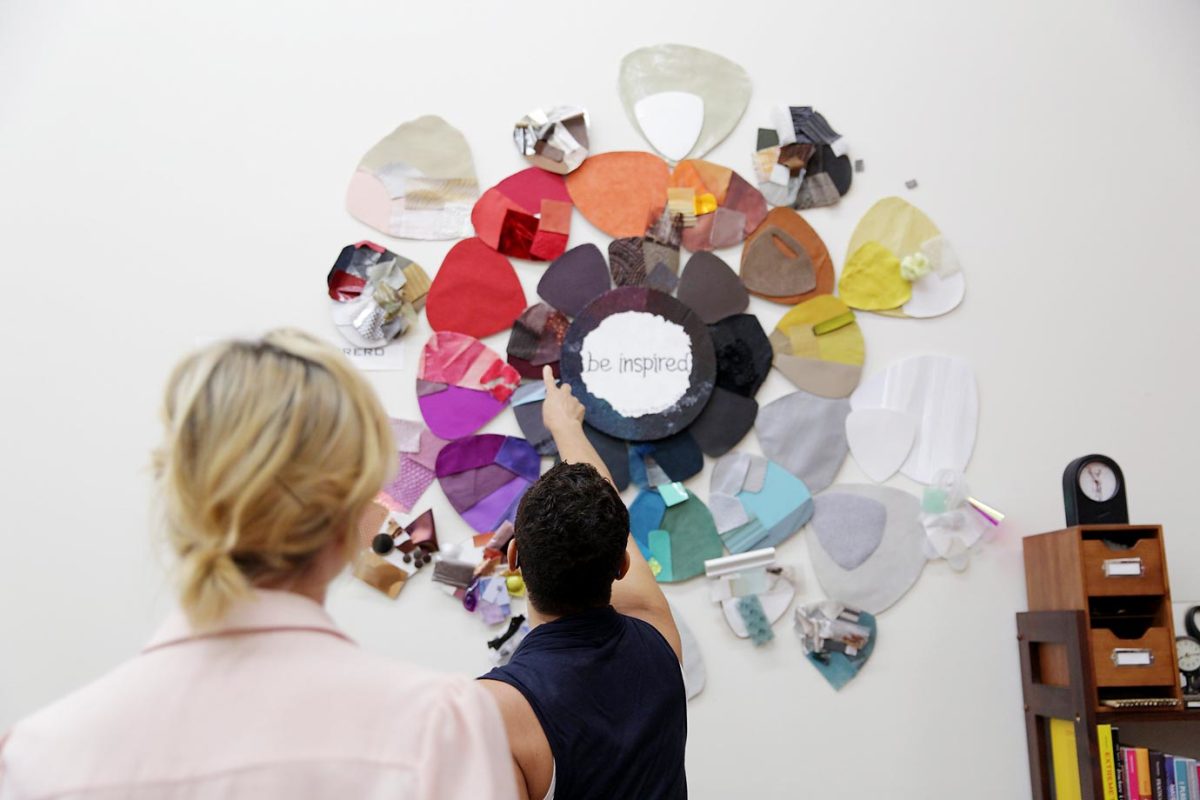
In the CMF corner (design shorthand for “color, material and finish”), Suzette Henry, another instructor, talks with Lindsey Johnson, a repeat PENSOLE student who finds the design academy “a little addictive.”
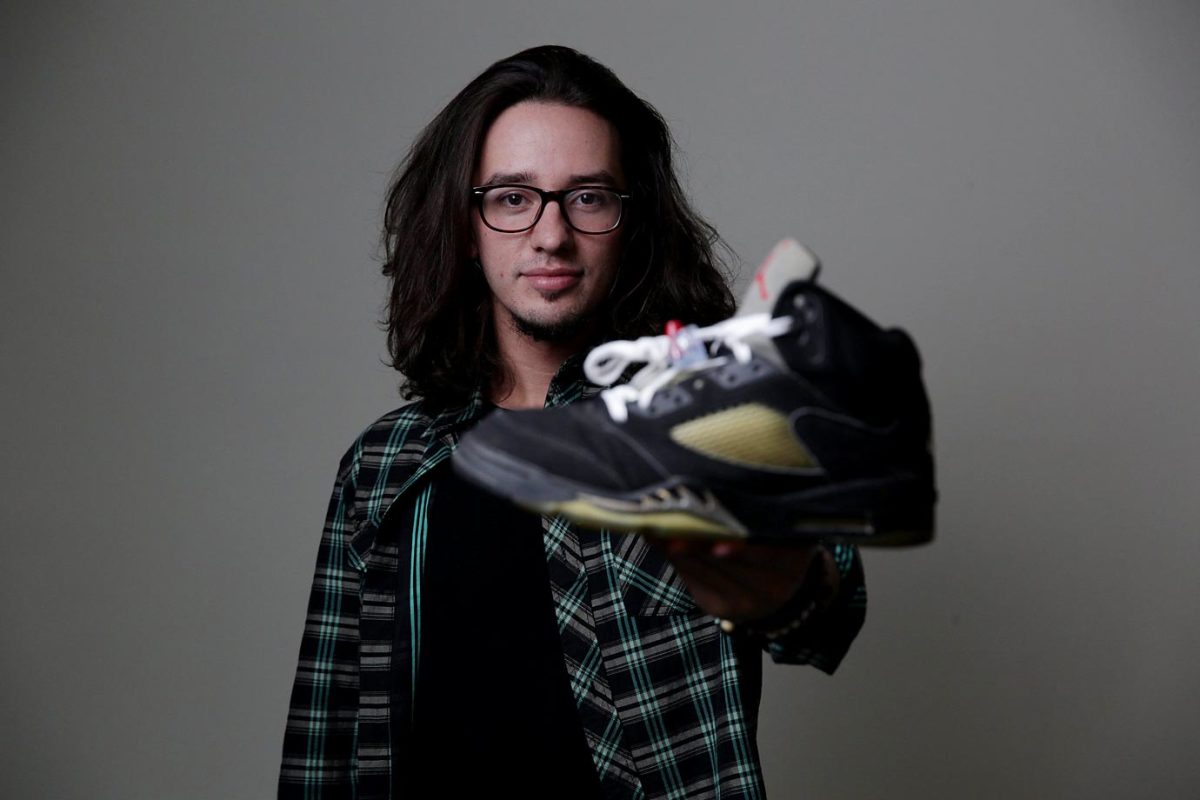
Andrew Parks of Cincinnati, a former Division-III baseball player, draws inspiration from the decade he was born into: “Design isn’t as good right now as it was in the 90s,” he says.
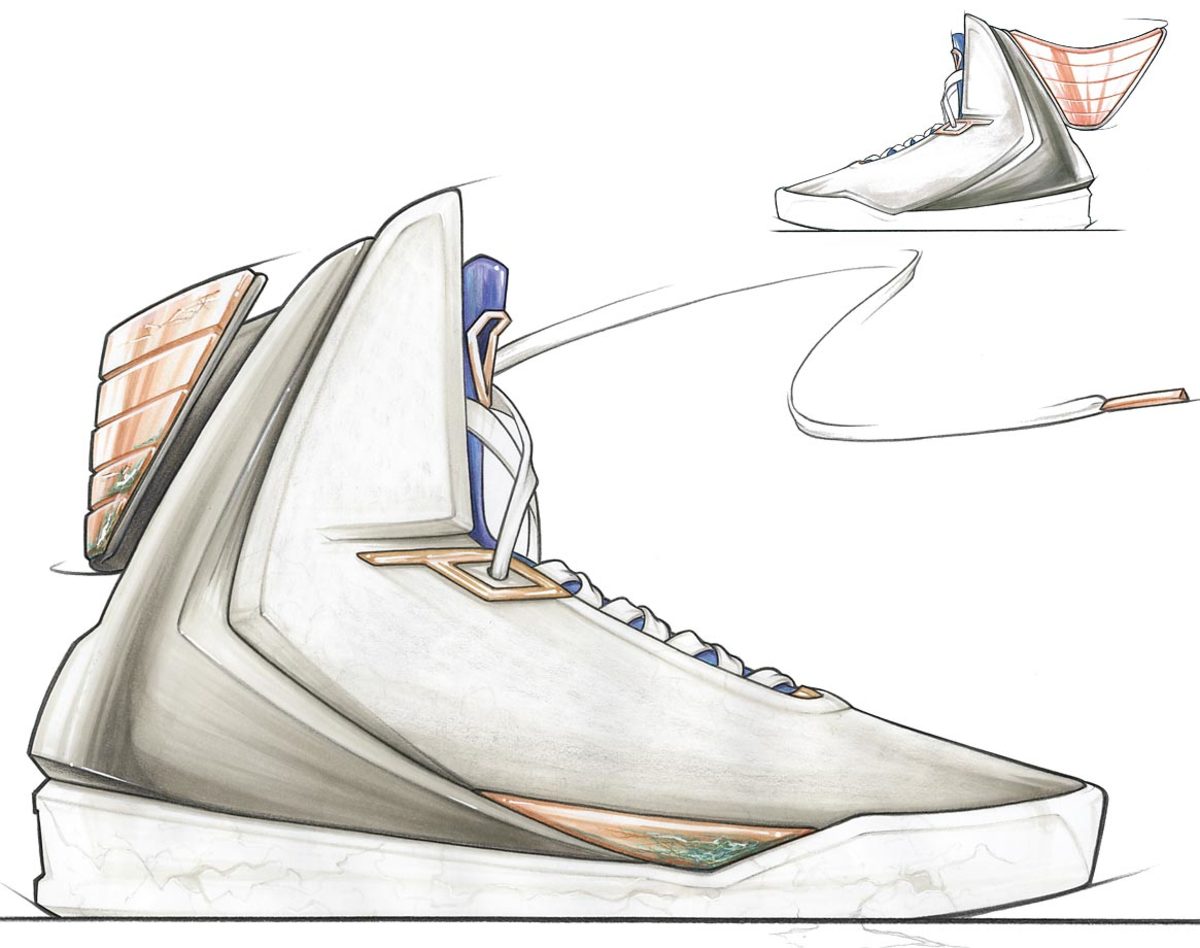
Stefan Cristobal (representing the Philippines) for Android Homme
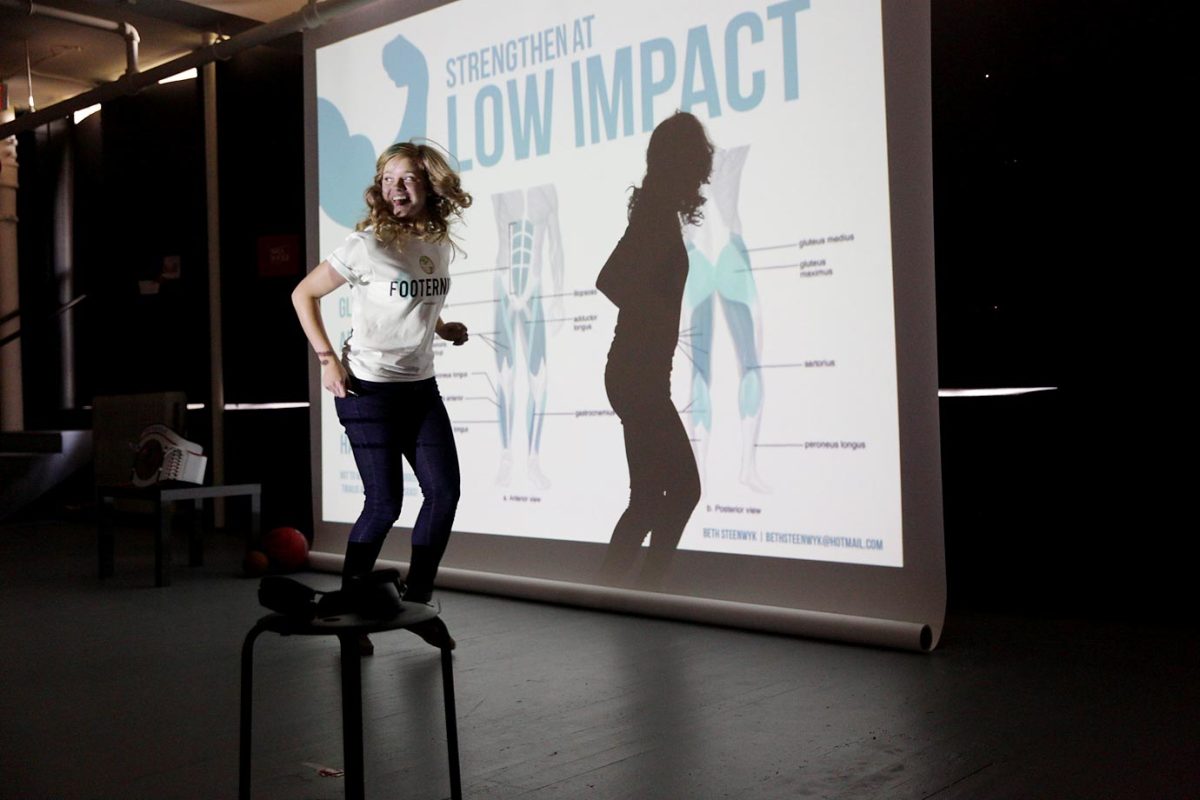
Steenwyk, a cross country runner at NAIA Lawrence Technological University in Southfield, Mich., designed a backwards running shoe, which led to a lot of backwards running on her part, both around Portland and here, at the final presentation in front of spectators and judges.
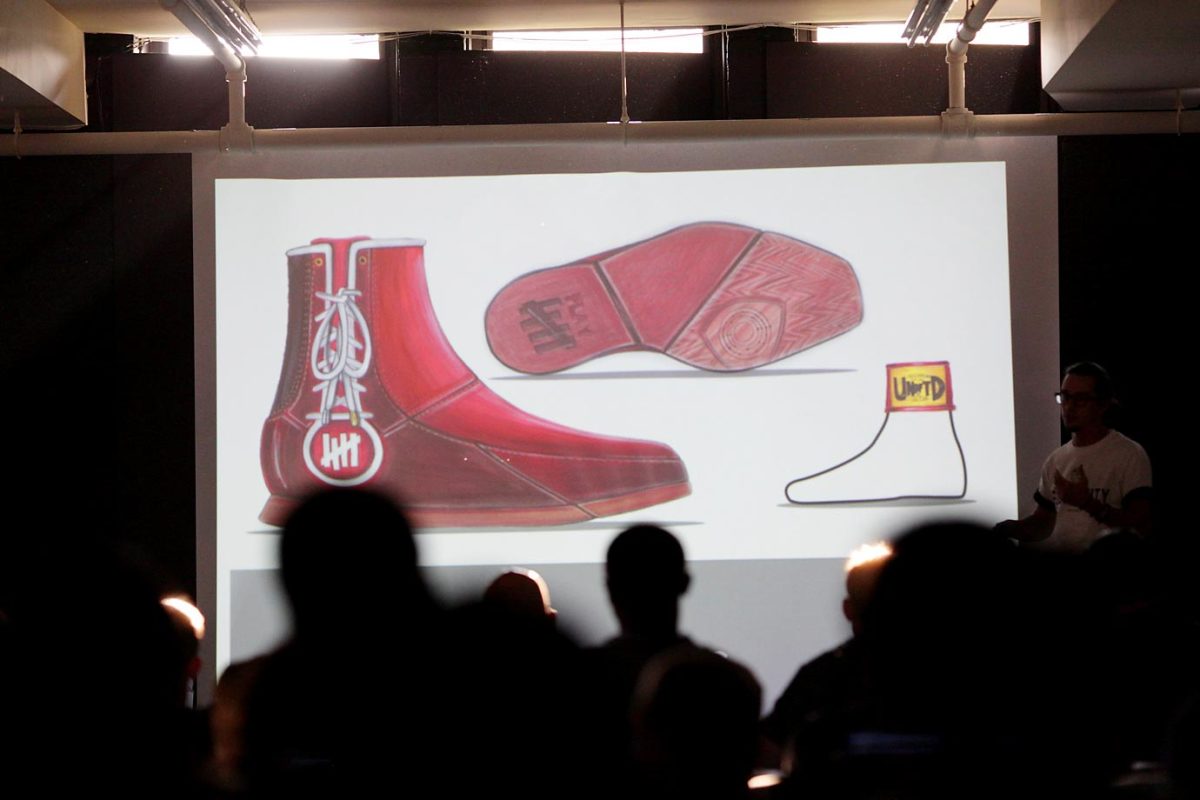
Inspired by Mike Tyson, Andrew Parks designed a boxing sneaker that featured patent red leather (like Everest gloves), a terrycloth interior (because Tyson walked out in the ring with a towel draped over his shoulders, not a silky robe) and one gold lace tip (for Tyson’s gold teeth).
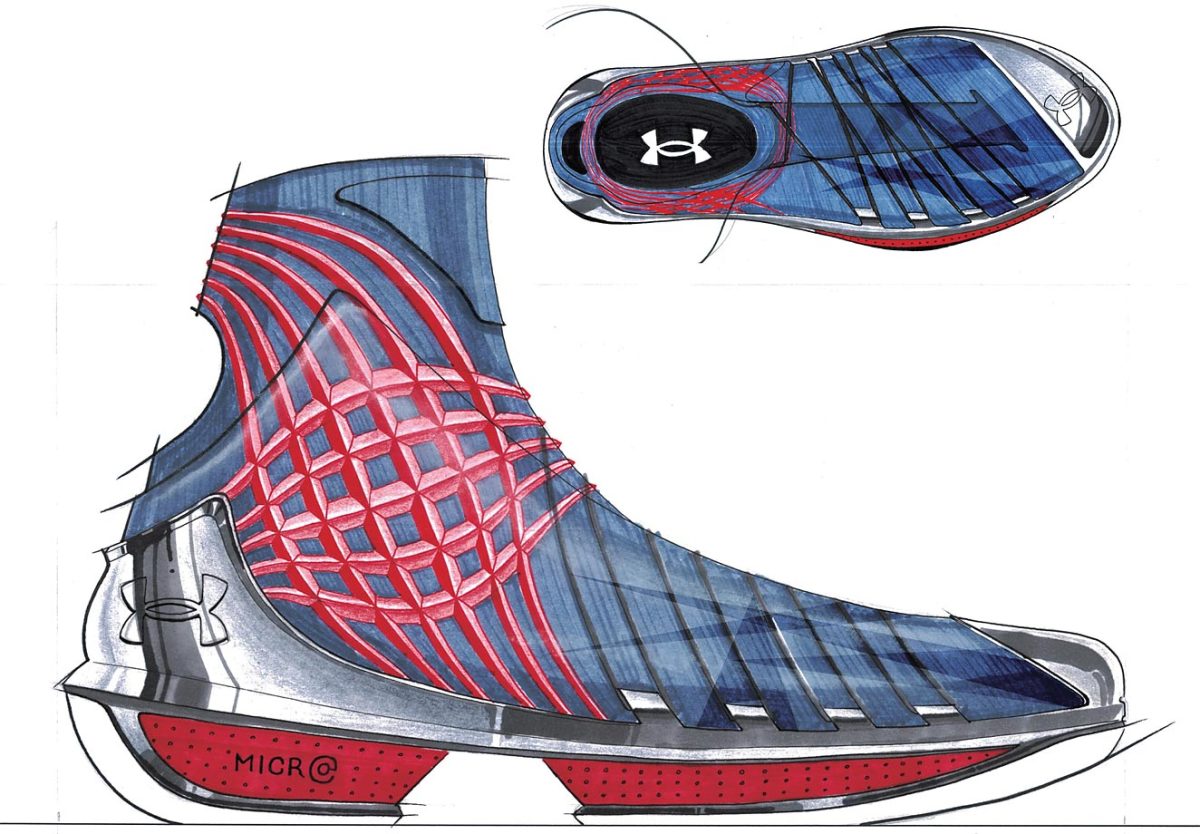
Ako Xiang (representing China) for Under Armour
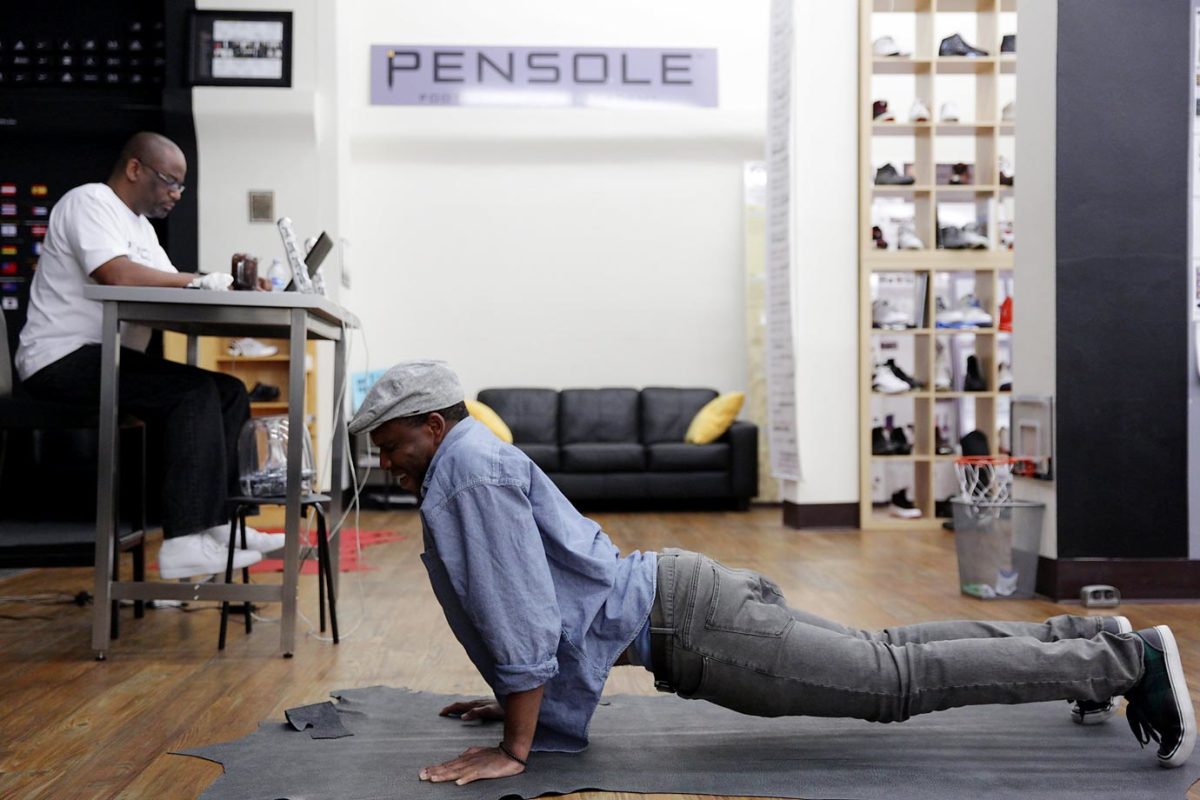
Tardiness is unacceptable at PENSOLE — and punishable by pushups.
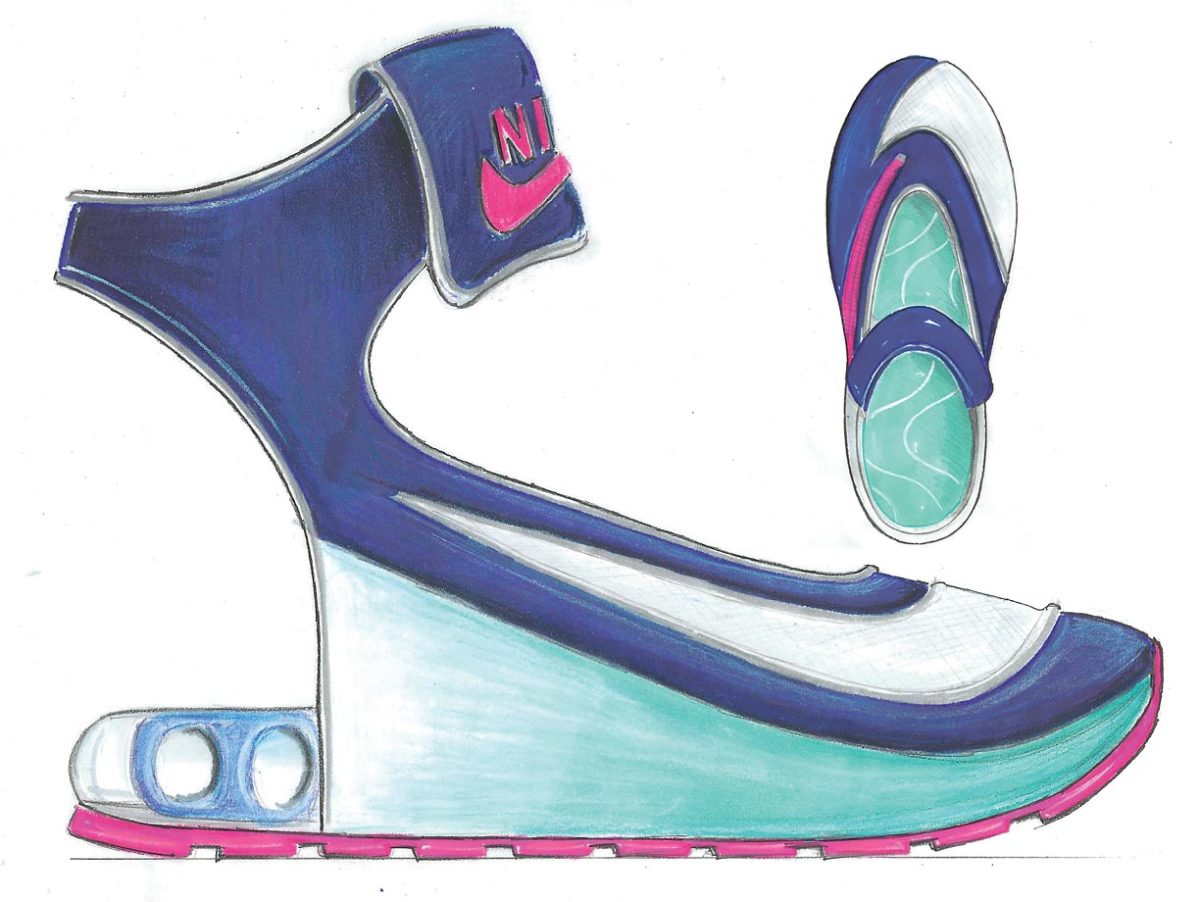
Victoria Adesanmi (representing Nigeria) for Nike
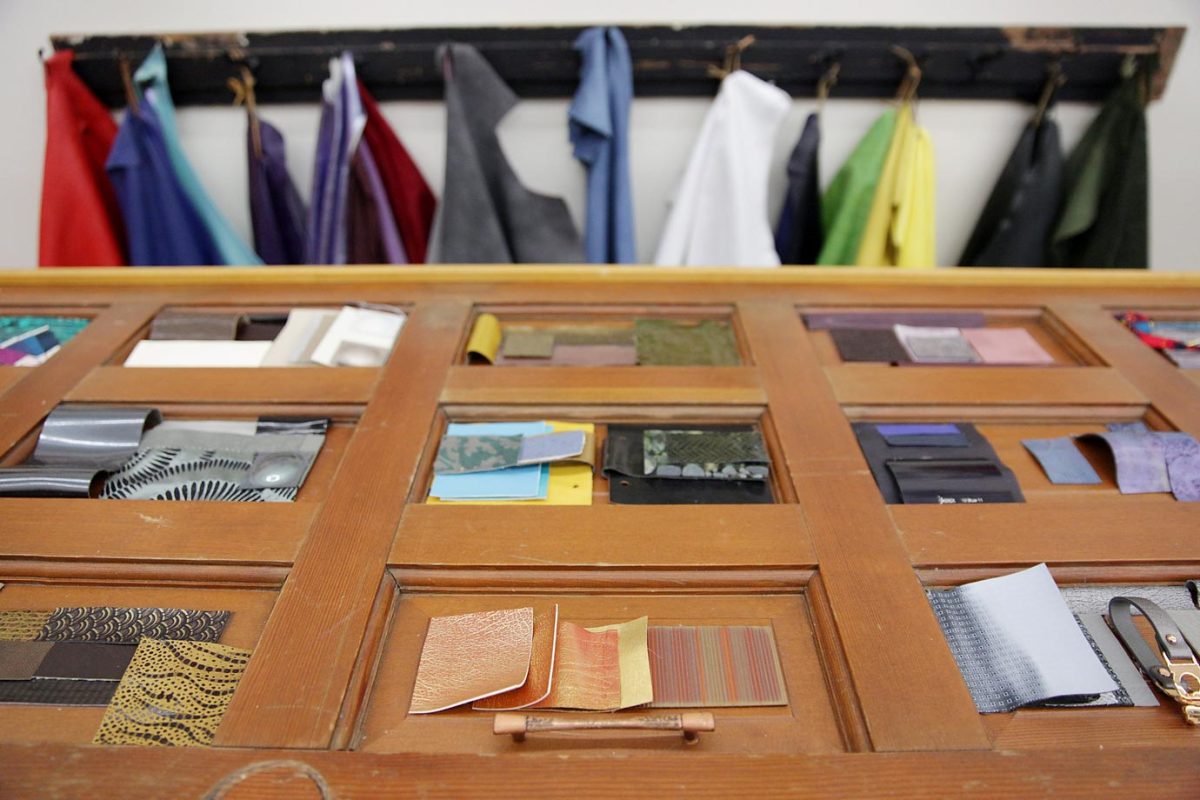
Just thinking about what a sneaker could look like isn’t enough at PENSOLE; students are encouraged to feel different materials and pair colors together in the CMF lab.
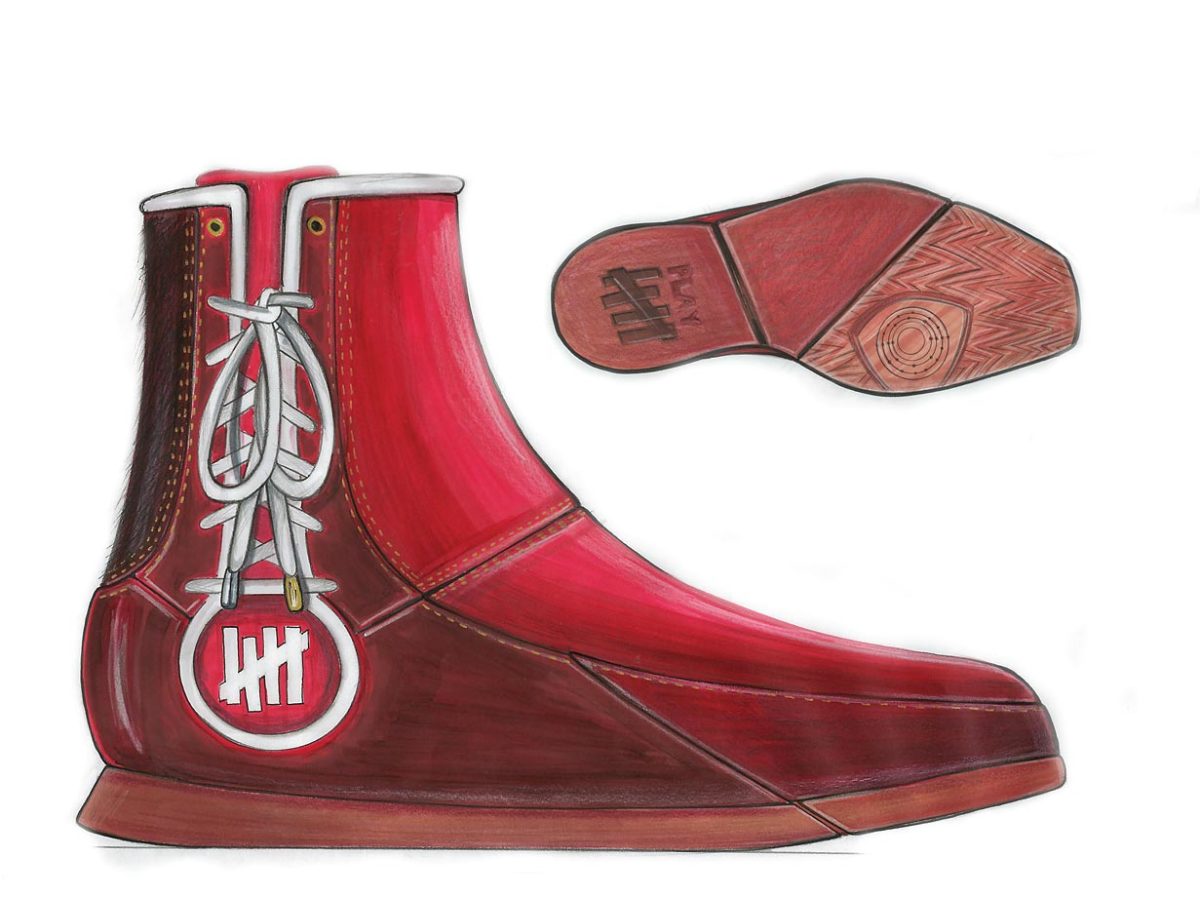
Andrew Parks (representing USA) for Undefeated
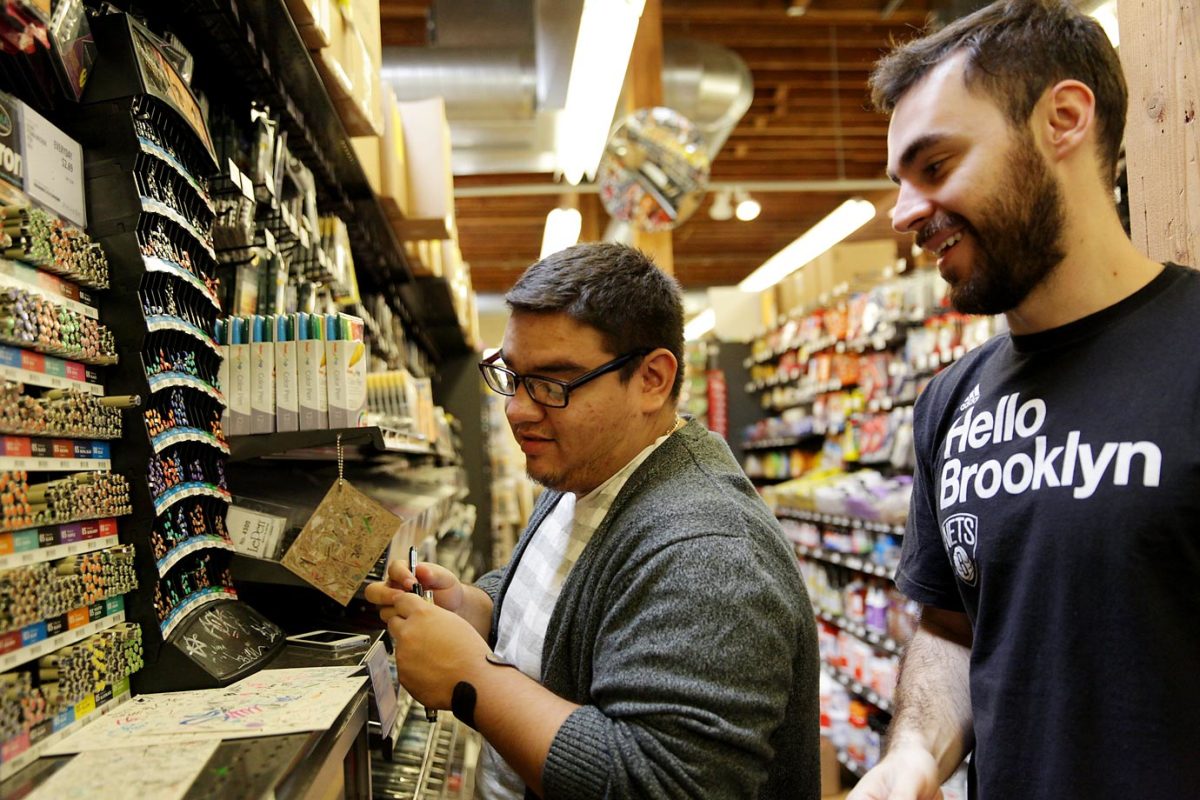
On a trip to Blicks Art Materials in northwest Portland, Jesus Garate (representing Mexico) and Guilherme Lemes (Brazil) were encouraged to look for inspiration, and ideas, down every aisle.
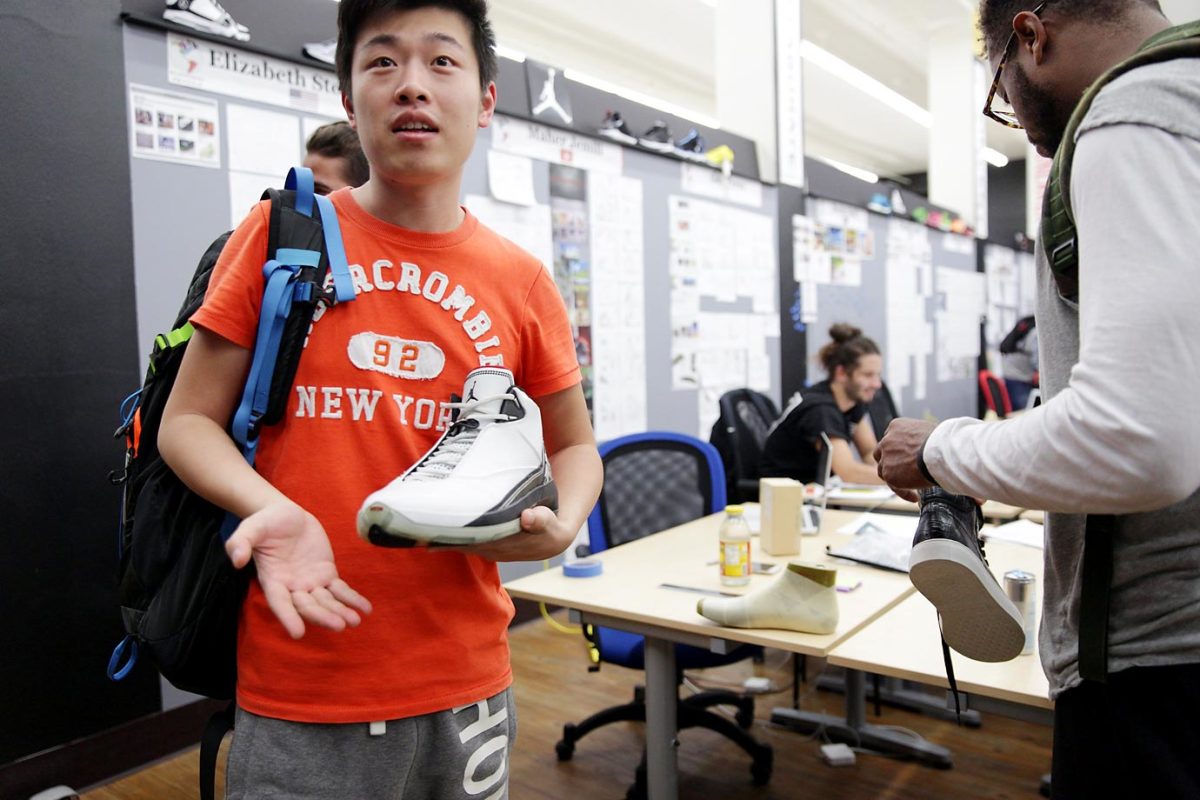
A basketball junkie, Ako Xiang of China, designed a shoe for his favorite player: The shooting guard.
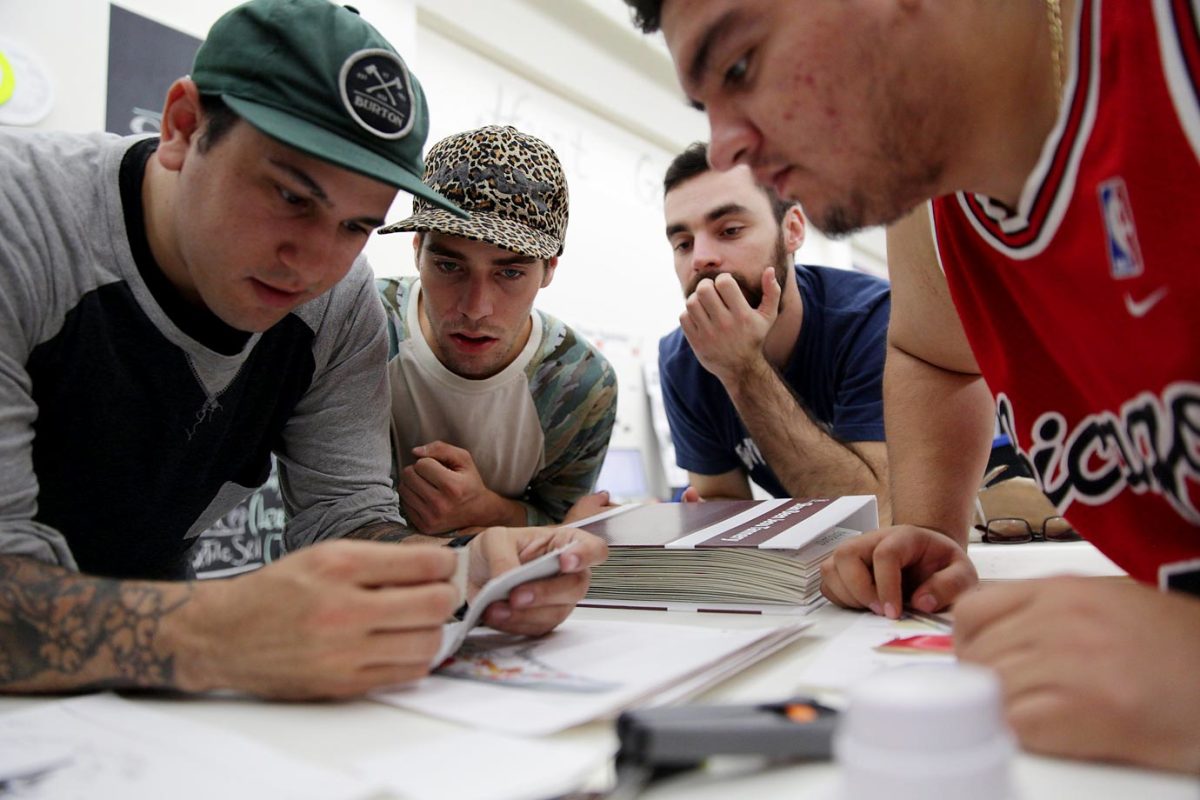
From left: Shaun Kosoy (representing the United State), Jared Fiorovich (USA), Jesus Garate (Mexico) and Guilherme Lemes (Brazil) were competitors, technically, but eager to help each other in an effort to preserve the "design integrity" of sneakers.
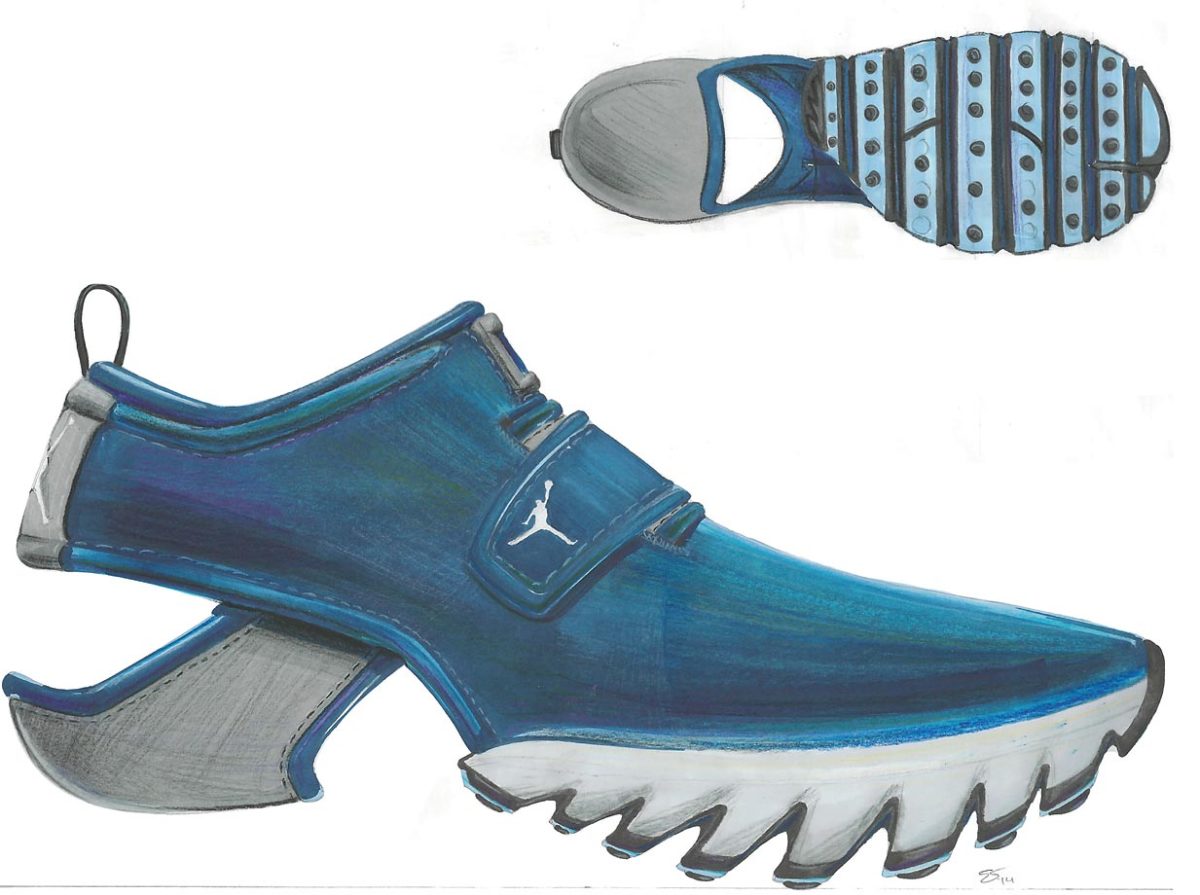
Beth Steenwyk (representing USA) for Air Jordan
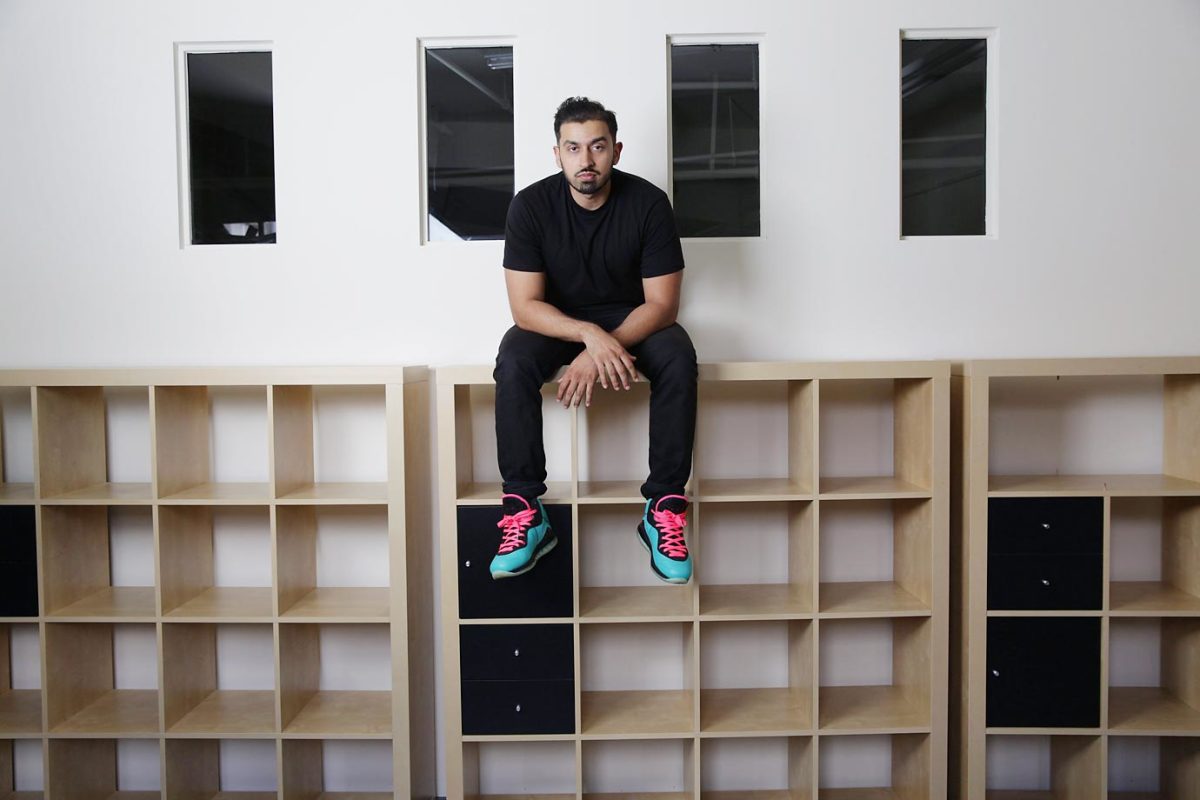
Born in the United States but representing Pakistan, Zia Ahmad was the oldest student at the World Sneaker Championships at 33. He drove himself up to Portland from San Francisco, where he lives and works, with sneakers piled in his backseat. Having options was important. "Footwear is the last piece of authenticity," he says, "that makes your outfit legit."
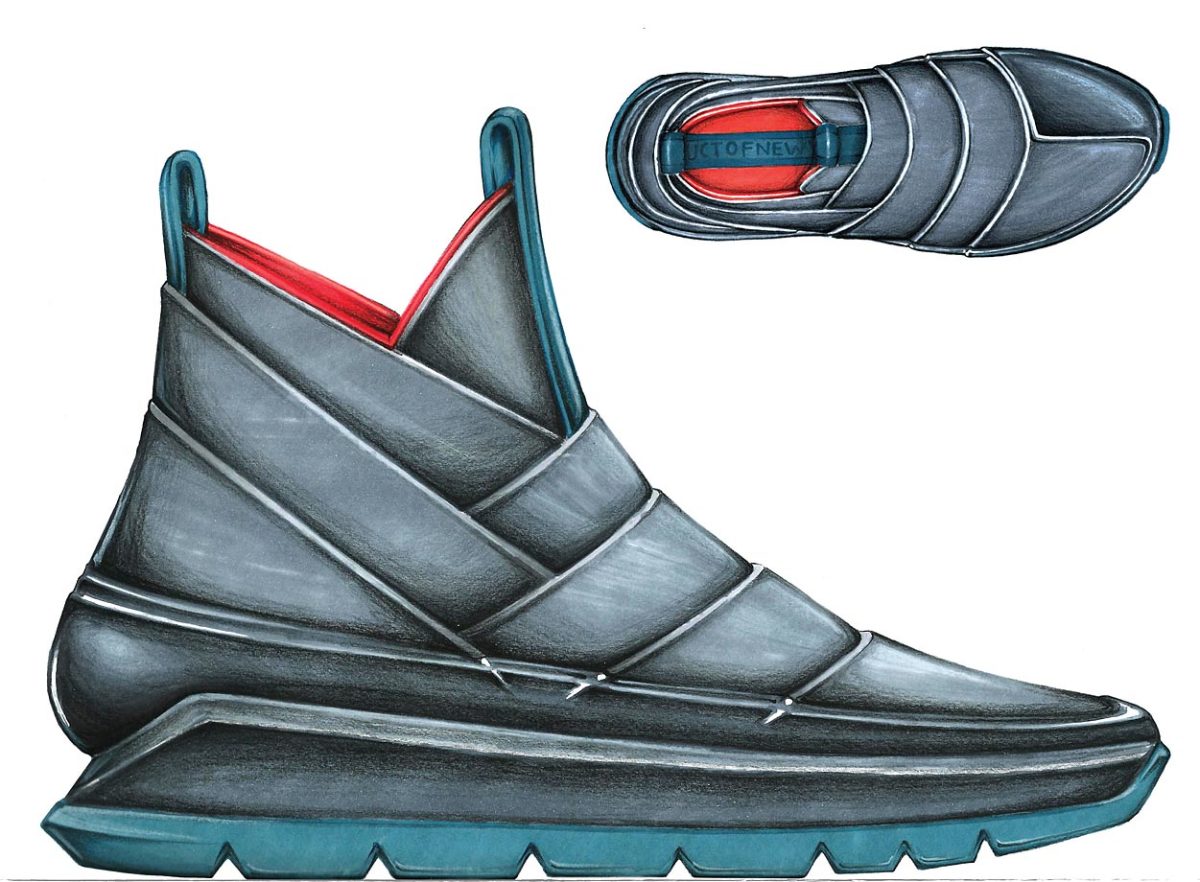
Danny Chambers (representing USA) for Pony
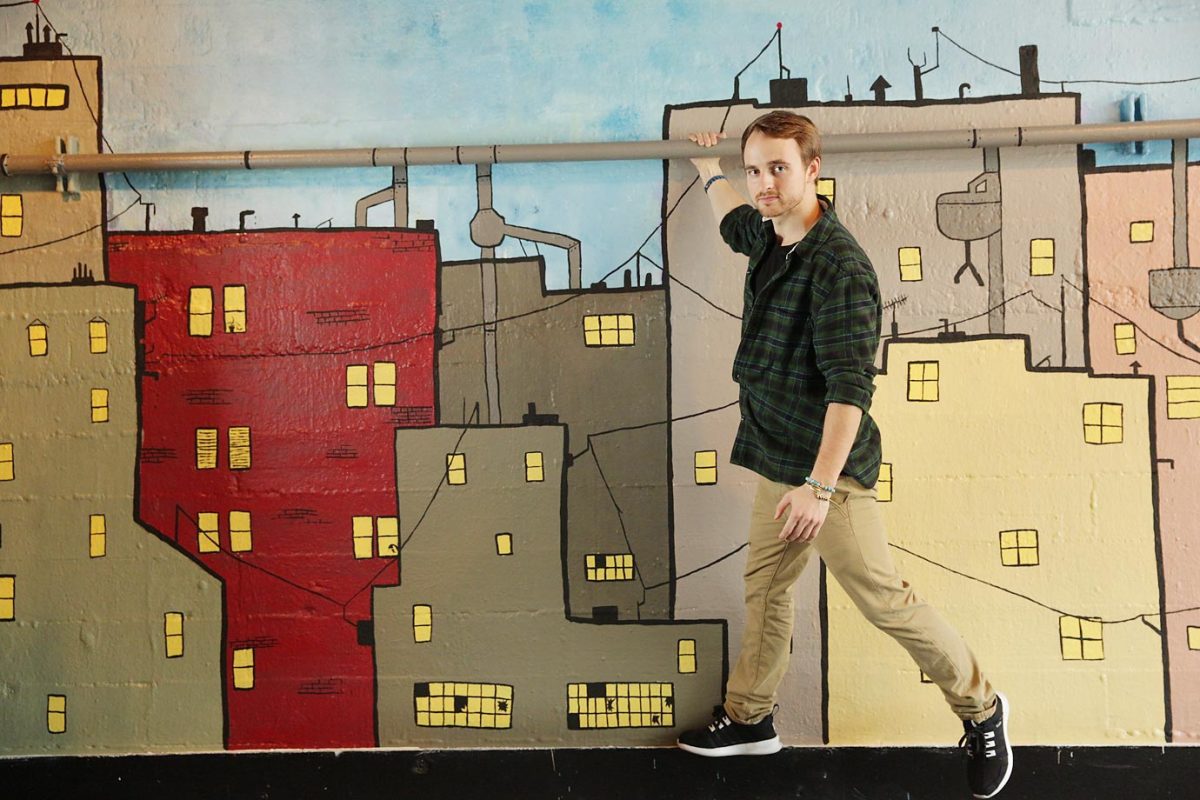
Daniel Raes, a 2013 graduate of Iowa State, knew in the sixth grade that he wanted to design sneakers. To study his craft, he got a job at Foot Locker, and used his employee discount for what he deemed “design research.”
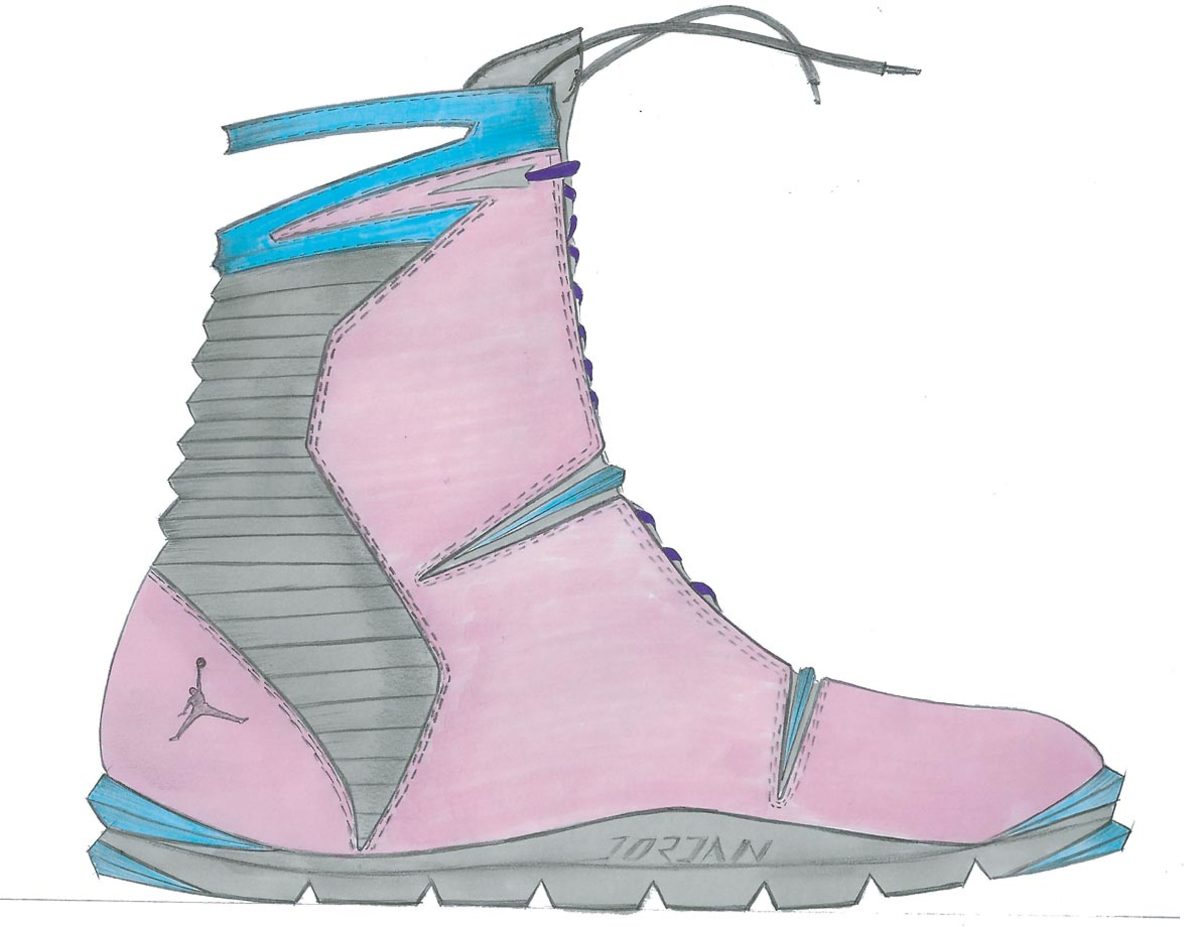
Maher Jemili (representing Tunisia) for Air Jordan
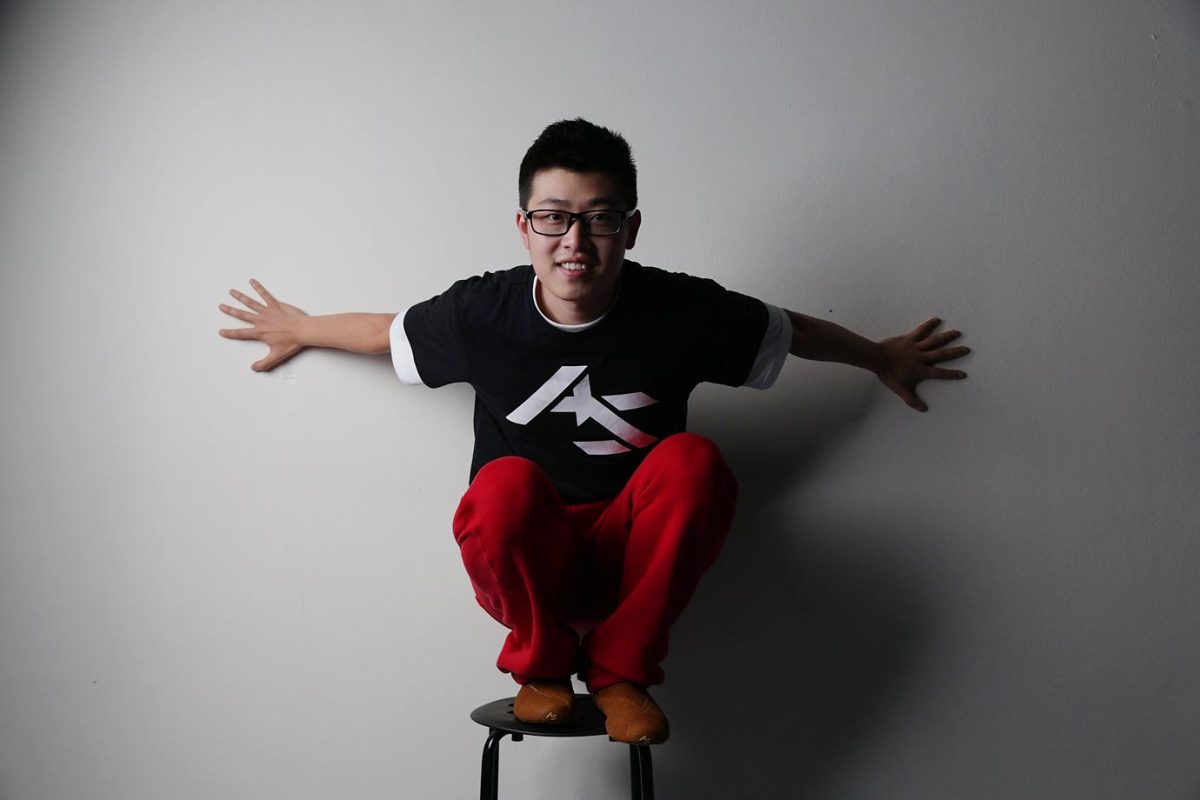
Ako Xiang quit his job at ANTA in China to attend the World Sneaker Championships after meeting Edwards three years ago. This is his first time in the United States. “I put all my heart (in) to do this, to come here and study with D’Wayne,” Xiang says.
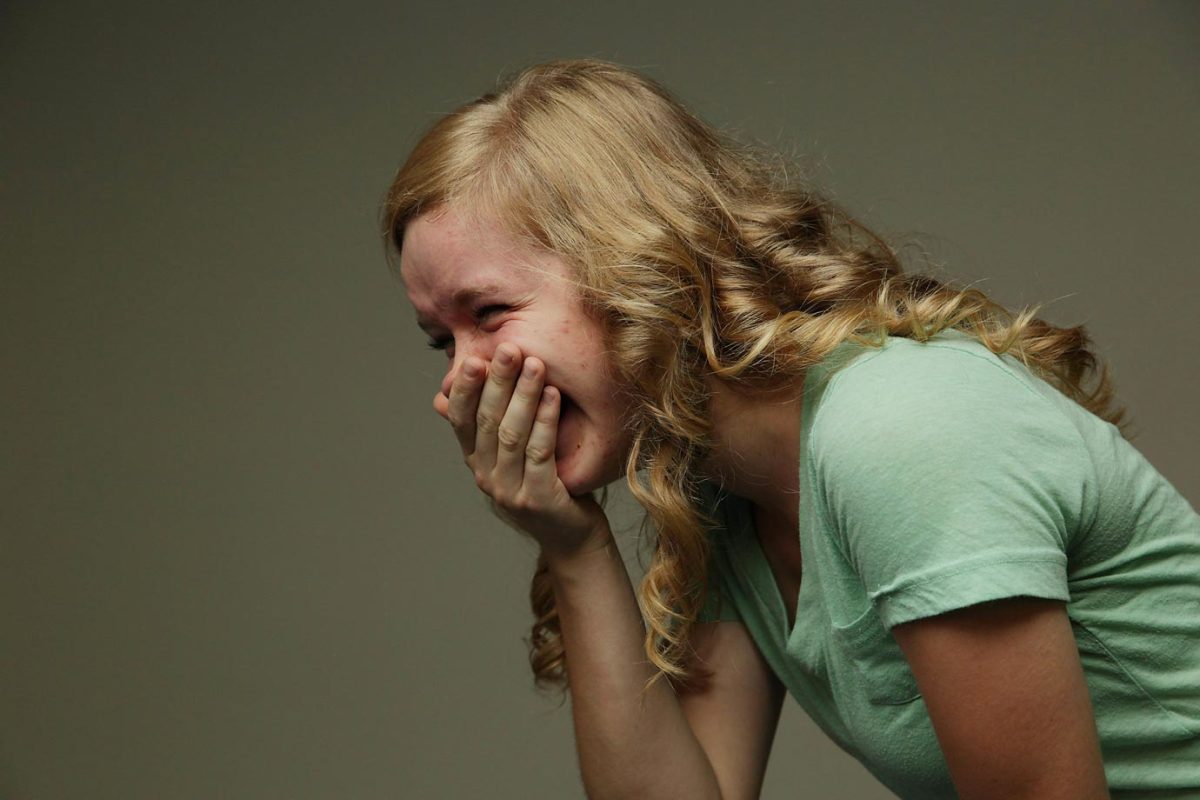
Beth Steenwyk, the youngest student at the World Sneaker Championships, says it took “one black hole of a semester” studying architecture to realize she needed a different major.
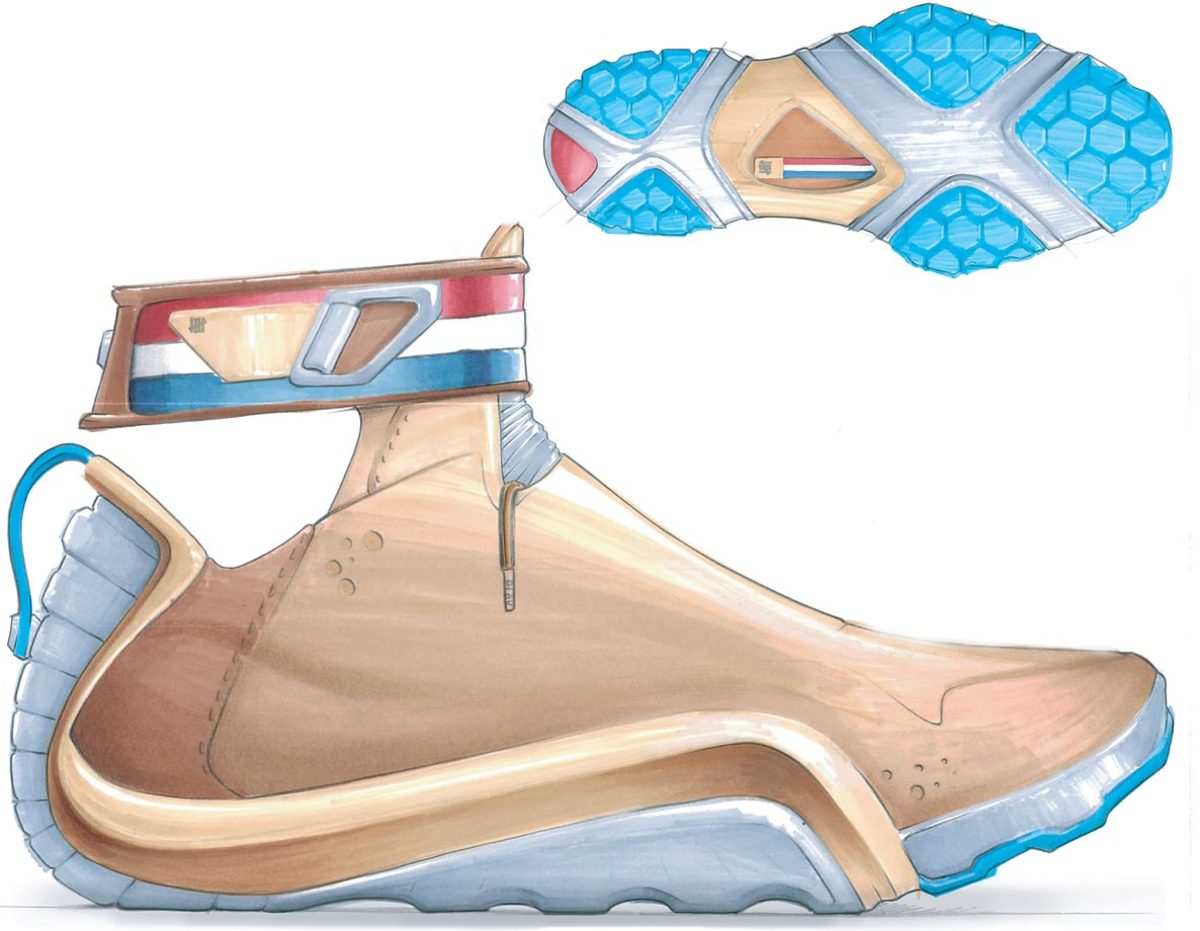
Zia Ahmad (representing Pakistan) for Undefeated
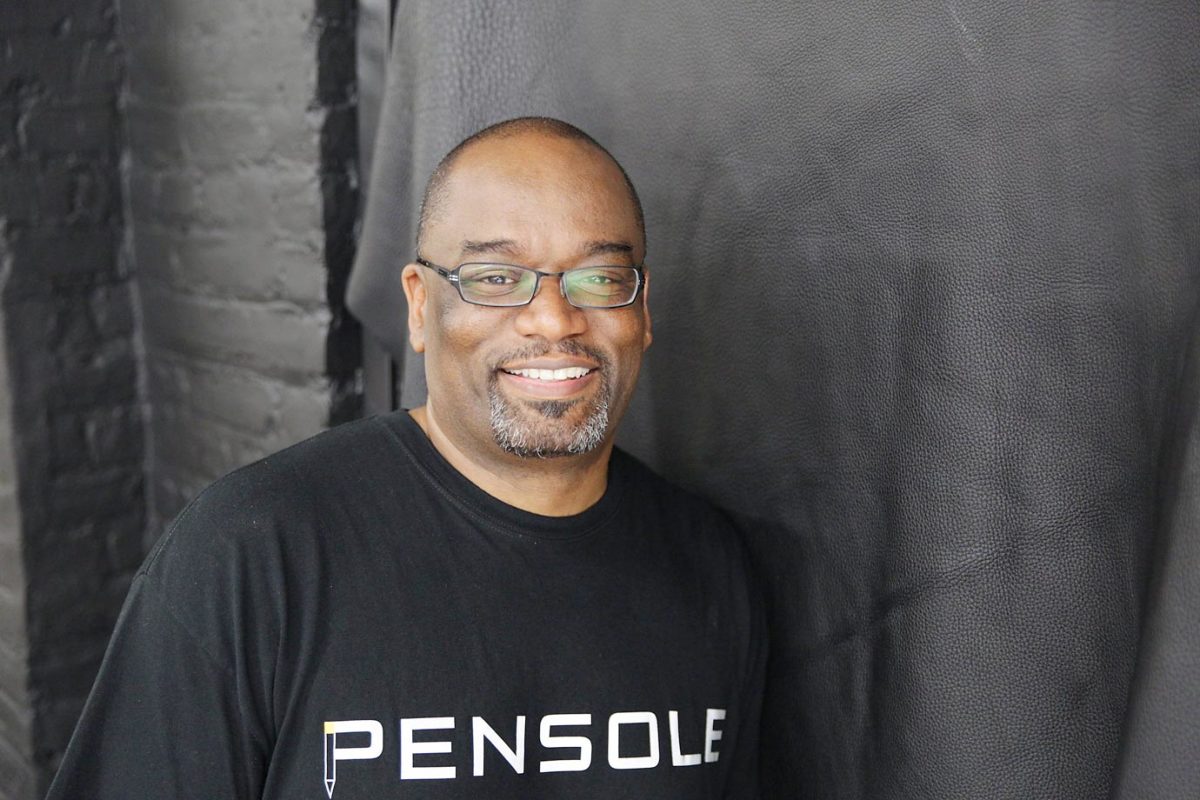
“I don’t think you can ever conquer design, because it’s because it’s always evolving,” says Edwards, who considers PENSOLE his greatest creation.
*****
Beth Steenwyk has a problem. Because she’s a designer, it’s self-created.
It took “one black hole of a semester” studying architecture at Lawrence Technological University in Southfield, Mich., for Steenwyk to find industrial design, and fall hard for it.
The itch to create has brought her the World Sneaker Championships in Portland. Steenwyk and her 29 classmates all landed here the same way. They submitted one black and white sketch, and were hand picked by Edwards. Assigned one of eight brands students are told to become storytellers to create and sell their sneaker. Steenwyk’s consumer: A young female athlete. Her problem: Too many torn ACLs, an epidemic sweeping through the young female athlete population. Her solution: Train differently than young male athletes. For Steenwyk this meant backwards running.
• SI.com's Sneaker Hub: Latest news, photos features on basketball shoes
Used by professional and amateur runners all over the world -- Steenwyk came to understand its importance through her cross-country training -- backwards running improves balance, strengthens hamstrings, helps maintain an upright posture and lessen impact on knees. So almost every night, Steenwyk laces up and sets off running in reverse around Portland (after a few crashes, she decided running on parking garage rooftops would be the safest). During her investigative work, she found her toes naturally splayed more as each foot hit the pavement, her body’s instinctual response to an off-balance activity. In her sketches, the toe section is noticeably bigger than in a regular shoe.
At the final, when students stand in front of 200-plus spectators and eight judges, Steenwyk draws laughs from the crowd as she opens up her presentation by jogging backwards. The youngest student at 19 -- the oldest is 33 -- she has a tendency to giggle uncontrollably during work. But in front of judges she speaks slowly and confidently. They nod approvingly at her enthusiasm and energy, and advance her to the championship round, in Las Vegas, where she’ll present at the largest footwear trade show in North America.
One by one, students file to the projector screen to share their designs. Their personal stories stick with the judges.
Maher Jemili, 30, comes from a small village in Tunisia, Africa, where locals live off $3,000 a year. To pay for his $2,000 plane ticket to the United States, Jemili’s mother sold jewelry that had been in the family for generations. He speaks French, Arabic and broken English. When he can’t figure out exactly how to describe his passion for sneakers, he has a tendency to throw up his hands, widen his eyes and exclaim, “Wow!”
He sketches a pair of pink Jordans in honor of his little sister, who he says blends feminity with fierceness. During the presentation he wears his first pair of Jordans, the Jordan Melo M6 Future Sole with a color way never sold at retail, given to him by Edwards, an action that moved Jemili to tears when he opened them. Edwards says he has more than 400 pairs of sneakers but has no problem giving them away.
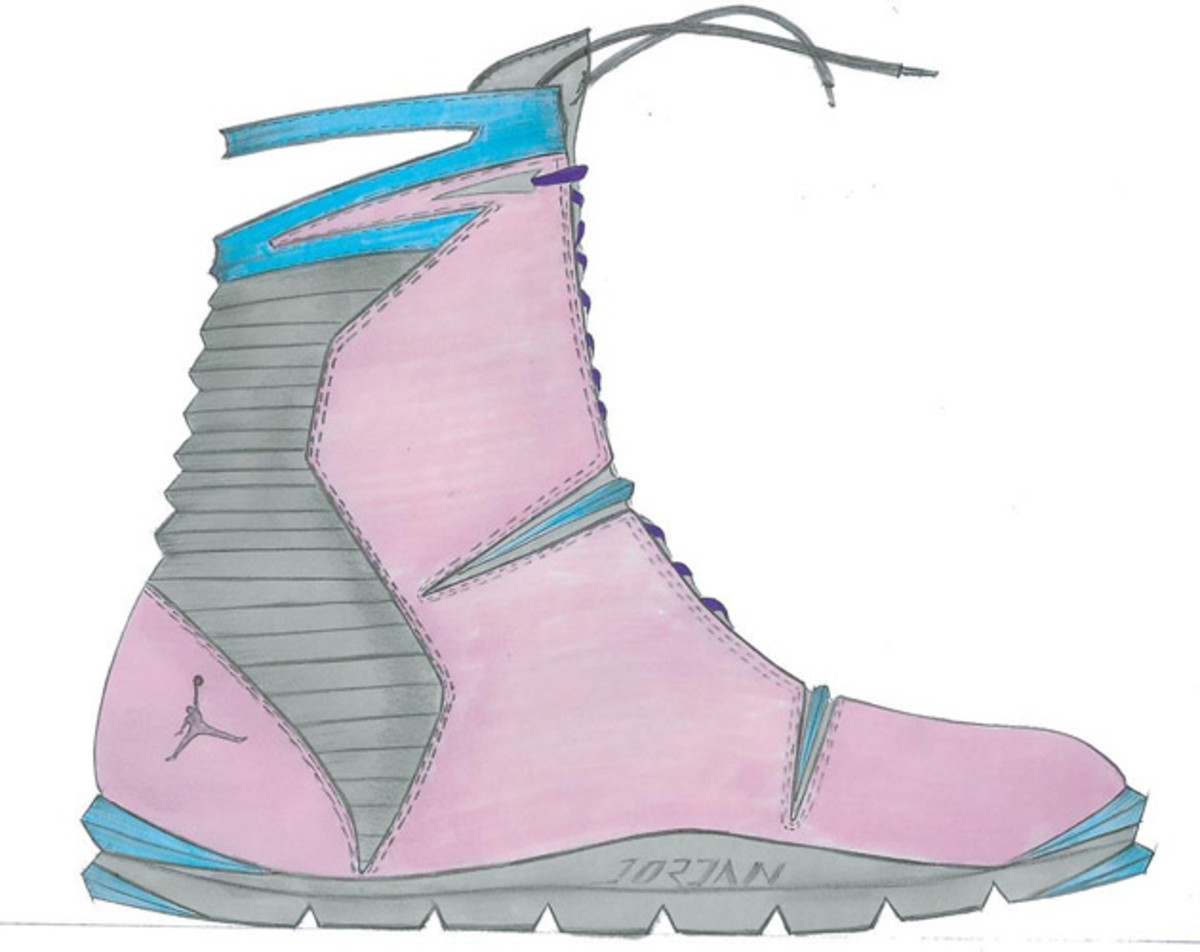
Ako Xiang, 28, quit his job at ANTA, a Chinese sneaker brand, to study at PENSOLE. For the World Sneaker Championships, Xiang creates a shoe for his favorite kind of player, a shooting guard. His shoe fits together two parts, and can feature either a “performance bootie” or an “attack bootie,” so the player can decide how much ankle support he wants when he goes from full speed to a jump stop before launching a shot. A project manager at ANTA, his designs were dismissed by the higher-ups. In August, when ANTA toured PENSOLE, Edwards sent Xiang to the back room, leery of upsetting a brand that had never listened when Xiang wanted to create, and might not appreciate his position now.
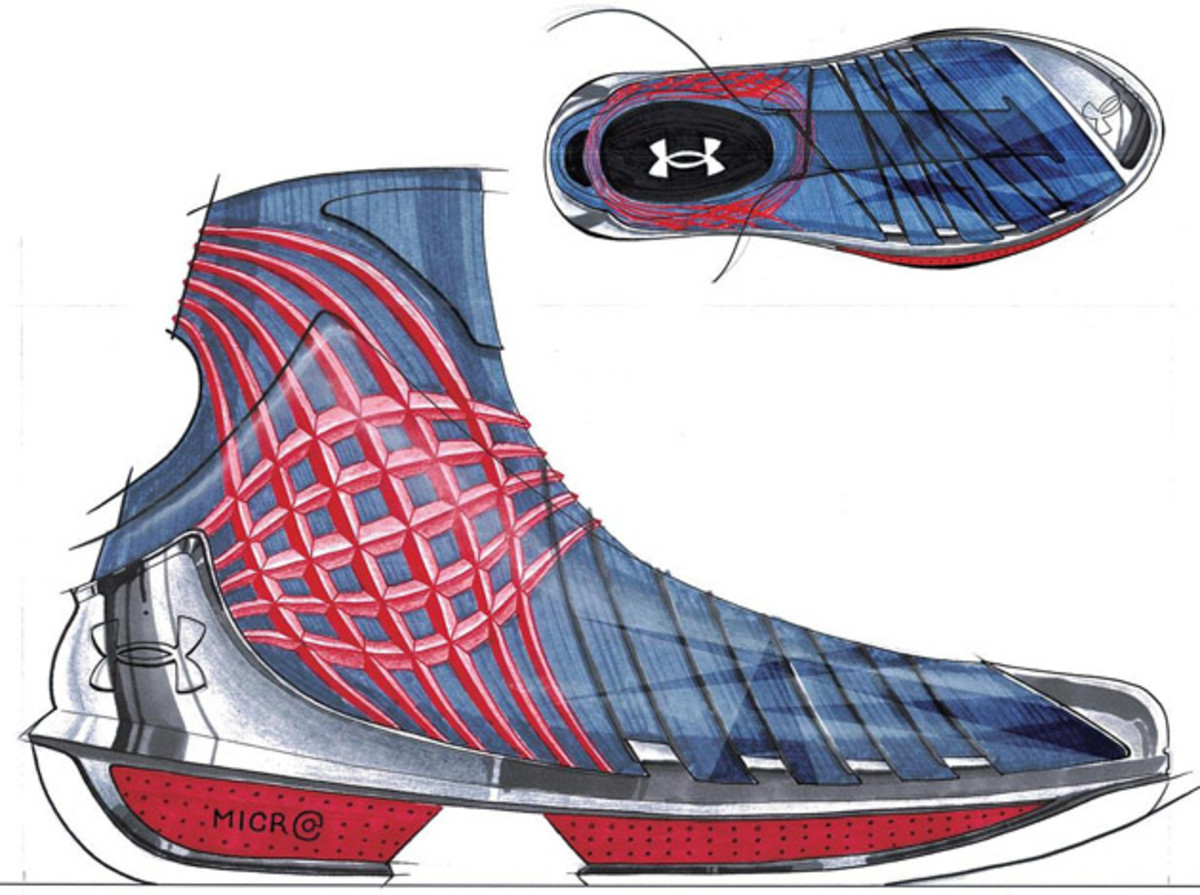
Andrew Parks, 24, sold more than 60 pairs of sneakers to purchase his plane ticket to Portland (Edwards provided housing and most of the food, almost a $7,000 per student value, but students were responsible for getting here). Putting PENSOLE on your résumé, he says, earns you an automatic call back from everyone in the industry when you’re job hunting. It’s tough to tell what Parks loves more -- sneakers or the 90s. In his mind one cannot exist without the other, with the best of sneaker design behind us. He still dresses like it’s 1990, the year he was born: baggy, cut-off sweats, shirts with graffiti print, long hair, backwards caps and hightops. If he walked into the PENSOLE studio with a boombox thumping on his shoulder, it would look totally normal.
In the competition, Parks works for Undefeated, a streetwear brand out of L.A. that specializes in collaboration. For his design, Parks has decided to pair with Everlast boxing gloves, and create a shoe inspired by legendary boxer Mike Tyson.
The design features some of the most iconic Tyson elements: A patent red, like the classic boxing glove; terrycloth interior, a nod to the towel Tyson used to drape over his shoulders as he walked into the ring; gold tips on the laces, symbolic of Tyson’s gold teeth; and jagged seam across the side of the shoe that represents the 1997 WBA Heavyweight Championship in which Tyson takes a bite out of Evander Holyfield’s ear. At the last minute, Parks eliminates this part of the sketch, worried he might be going overboard. Edwards tells him later if he had left in the seam, he probably would have won.
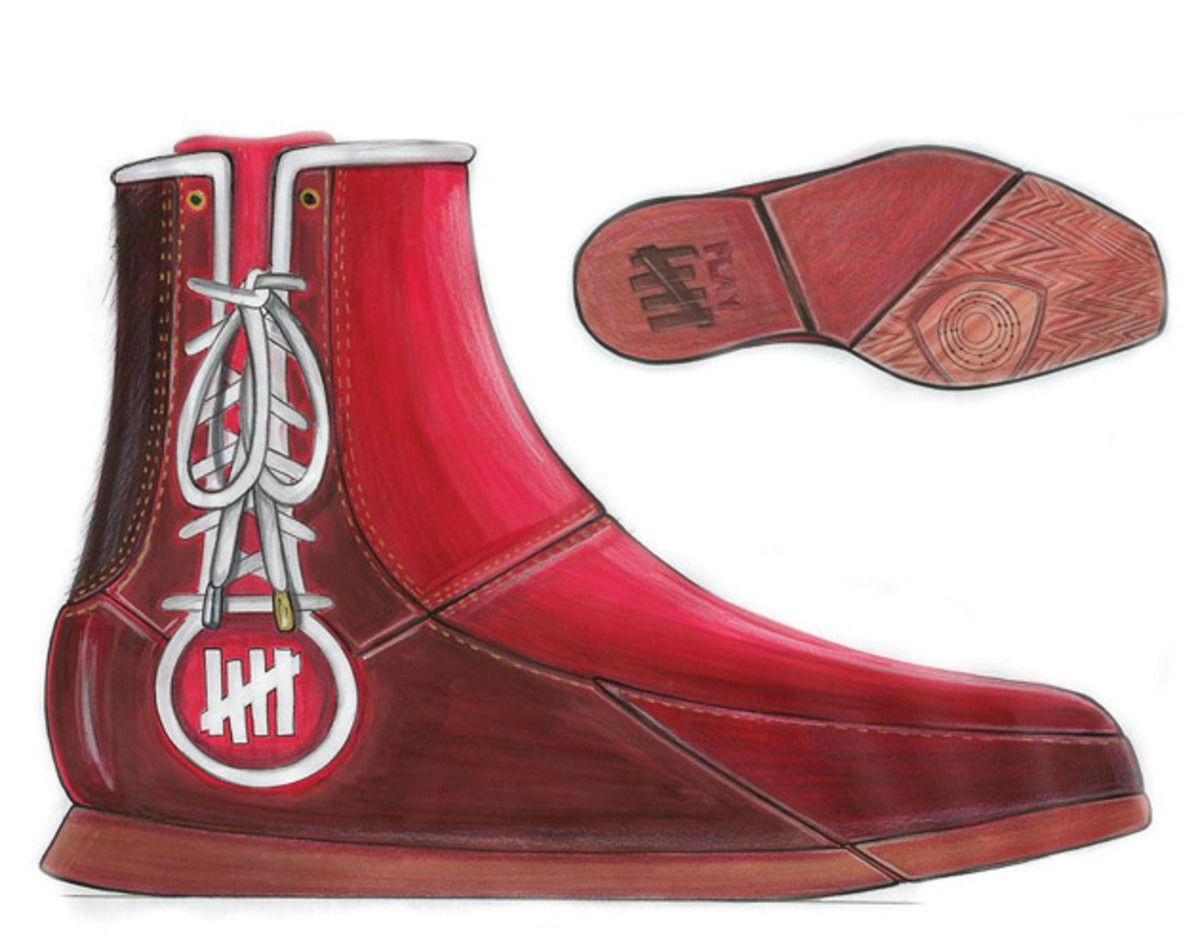
The WSC did not come with the promise of a job or cash prize for the winner. Instead, it offered tutelage from Edwards. “For sneakerheads, the Jordan brand is eternally equated with greatness,” says Zia Ahmad, a student of Pakistani heritage who drove from San Francisco to participate. “So D’Wayne is pretty much the man.”
For most of the general public, who couldn’t identify elephant print or fly knit, the Jordan brand serves as a pop culture entry point into the sneaker world. If the greatest player in NBA history wore it, it became instantly iconic. Maybe you’ve never stood in line for the latest pair of kicks, but surely you’ve seen the lines snake around shoe stores in anticipation of a debut, and heard that thousands show up at trade shows to discuss and dissect the latest styles. Competitions, collectors and blogs devote themselves to explanation and celebration. Edwards likens the culture to the cult-like following surrounding Apple products.
“Owning the latest pair of sneakers is validation for who you are in some places,” he says says. “If you’re a high school kid without the new Js (Jordans), you might be thought of as ‘less than.’”
Wilson Smith, the godfather of African-American designers at Nike who shepherded young minds like Edwards and E. Scott Morris through the Nike ranks, says it goes deeper than that.
“Kids draw sneakers like they used to draw cars. Back in the day, we’d buy some crazy automobile, IF you could afford it,” Smith says. “Kids think they may get to live that dream (of owning sneakers).”
The culture, he says, is accessible. And because of that, Morris believes it’ll become more diverse.
“Companies didn’t realize the consumers were going to become the creators,” says Morris, who used to work with Edwards at Nike and now calls himself a design alchemist. “That had never happened. Now, the culture is beginning to convert itself. In the next five years, (PENSOLE graduates) are going to have an immediate impact on what this industry becomes—and it’s going to go global.”
PENSOLE’s mission is simple: To discover, develop and place the future of footwear. When asked if he has a portfolio to show off to interested collaborators — Edwards is often requested, by name, by NBA superstars when they sign shoe contracts — he spreads his hands out and motions around the room. “This is it,” he says.
*****
After eight finalists are named -- one from each brand -- bleary-eyed students make their way to the work room to start breaking down design stations. Edwards looks around smiling, accepting an occasional hug or emotional thank you from a grateful student. Jemili presents Edwards with a hand-painted bowl from Africia as a token of thanks. Then, in a frenzied, yearbook-style exchange, students start ripping their sketches off the wall and trading them with fellow students, signing them with names, cell numbers and inside jokes.
Since the championship round in Vegas, where Stefan Cristobal (from the United States but representing the Philippines) won for his basketball shoe design created for the Android Homme brand, six students have found full-time gigs at footwear brands around the world. One plans to launch his own skate brand next year. Building off the success of the WSC, Edwards launched Soleholder, a fundraising campaign inspired by the Green Bay Packers Shareholders program. Edwards plans to use the funds to expand scholarships, programs and facilities, including turning PENSOLE’s upstairs space into a boutique manufacturing facility and sample room.
When students filed out of the presentation room that muggy August night, one of Edwards’ colleagues shook his head in awe.
“What you witnessed today is the next part of American sneaker mythology,” Morris says. “You don’t give away half your life in material objects, like they did with selling stuff for plane ticket money, to have an experience unless you really want to. For them to do that, it tells you what the value of sneaker culture is. People write movies about this. People think stuff like this doesn’t happen in shoes -- but look at that, it does.
“This is the freshest thing I’ve seen in decades. This is the birth of a sneaker renaissance.”
